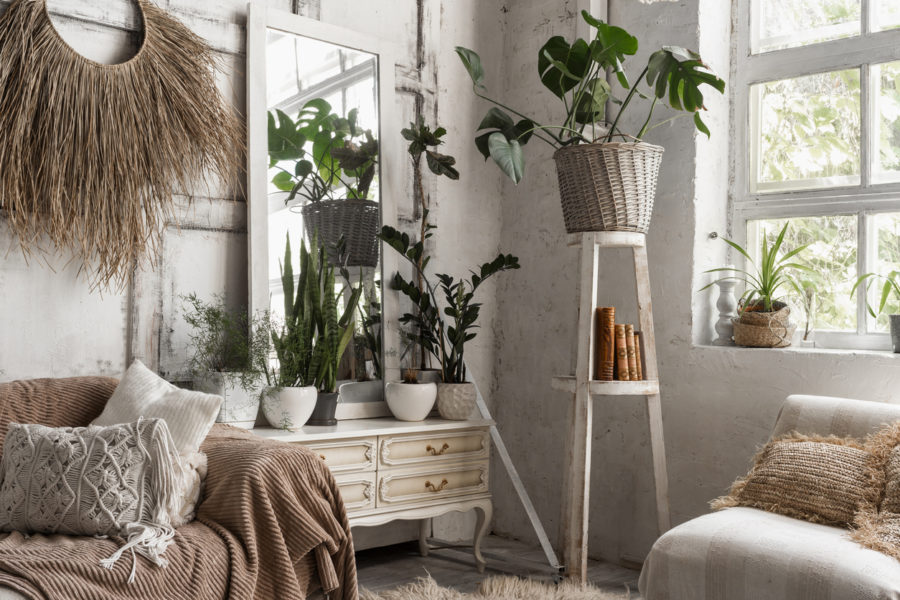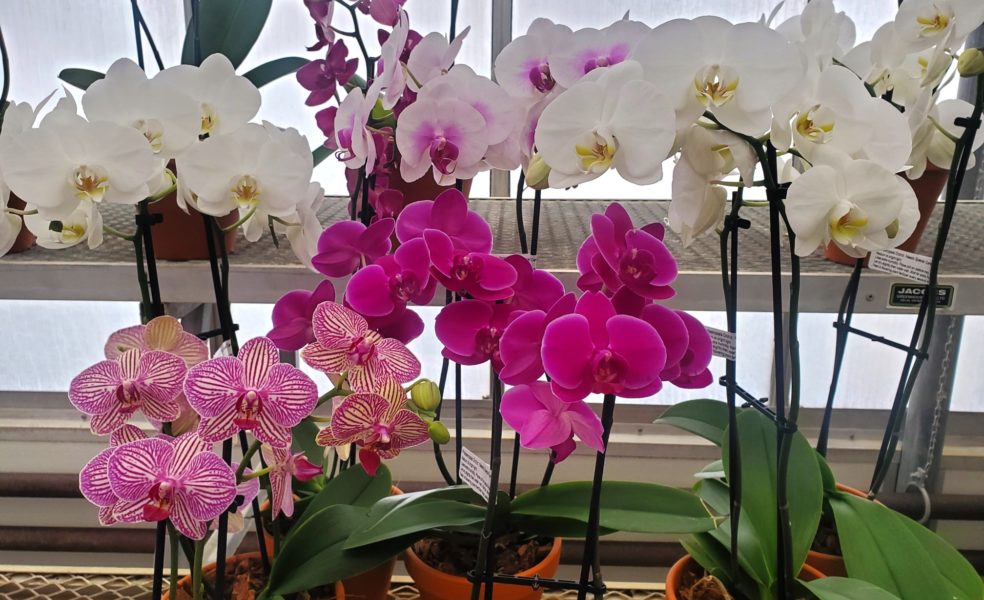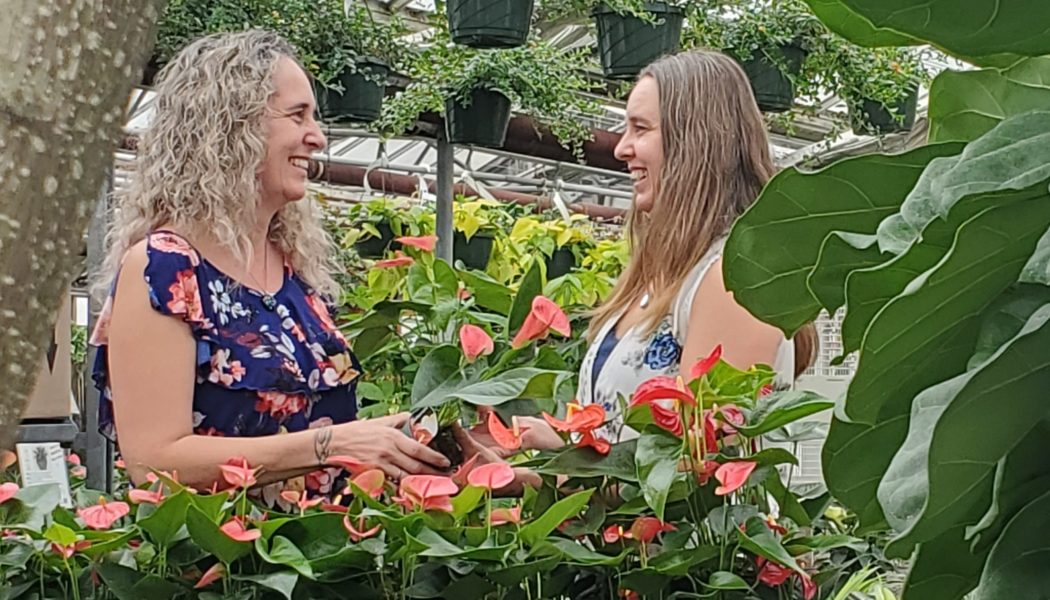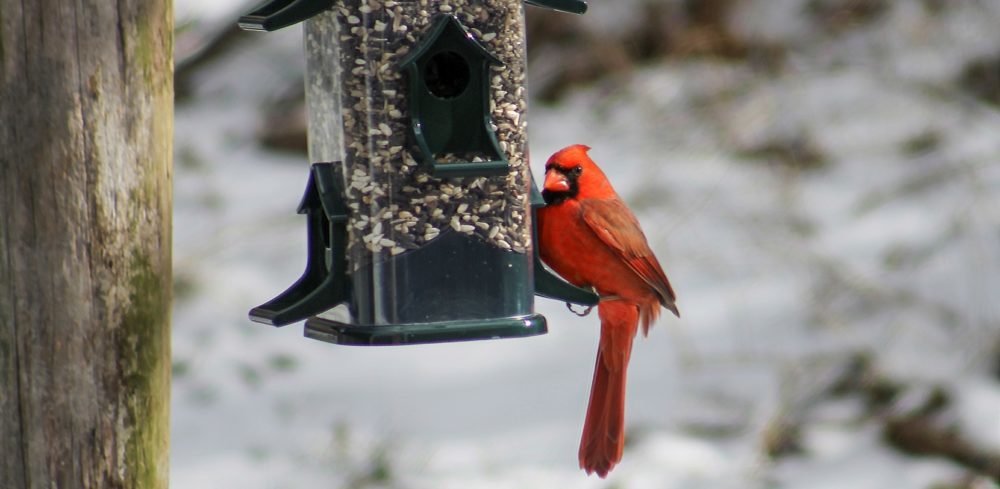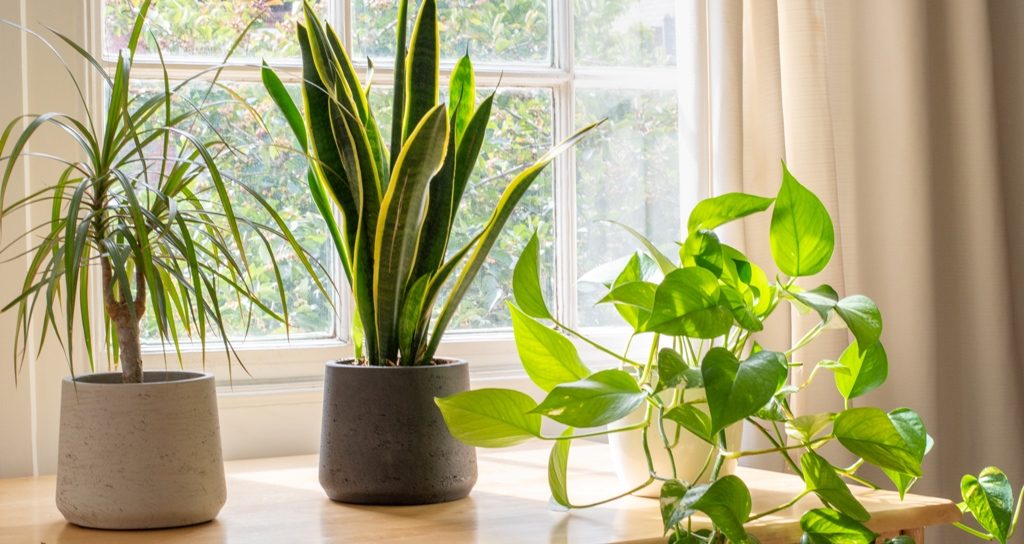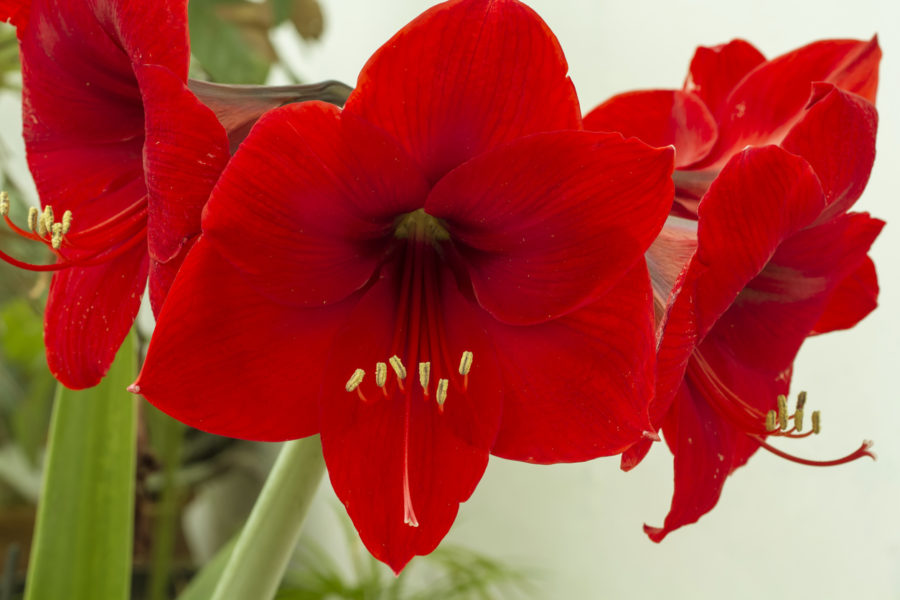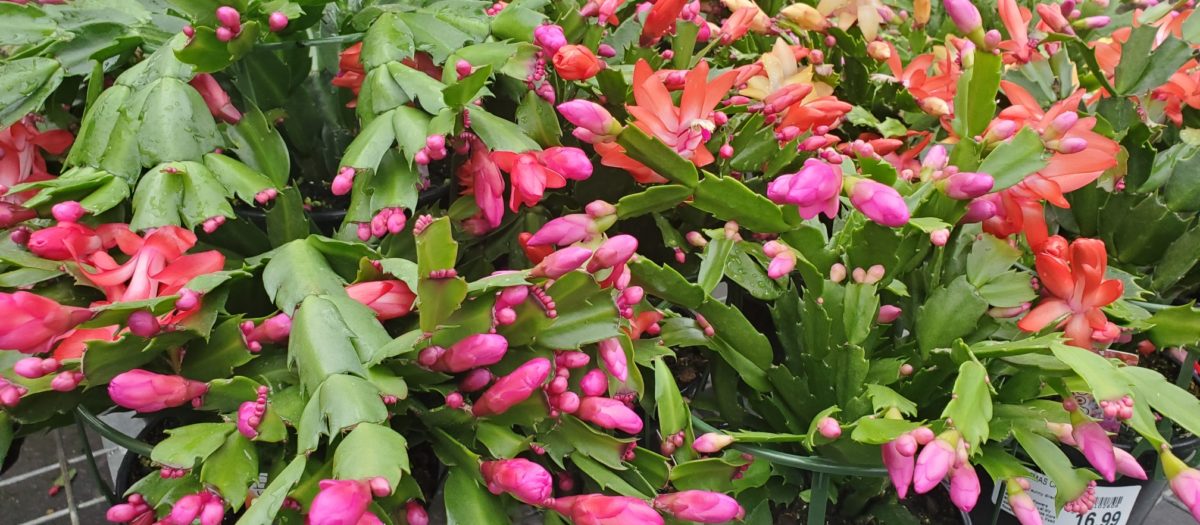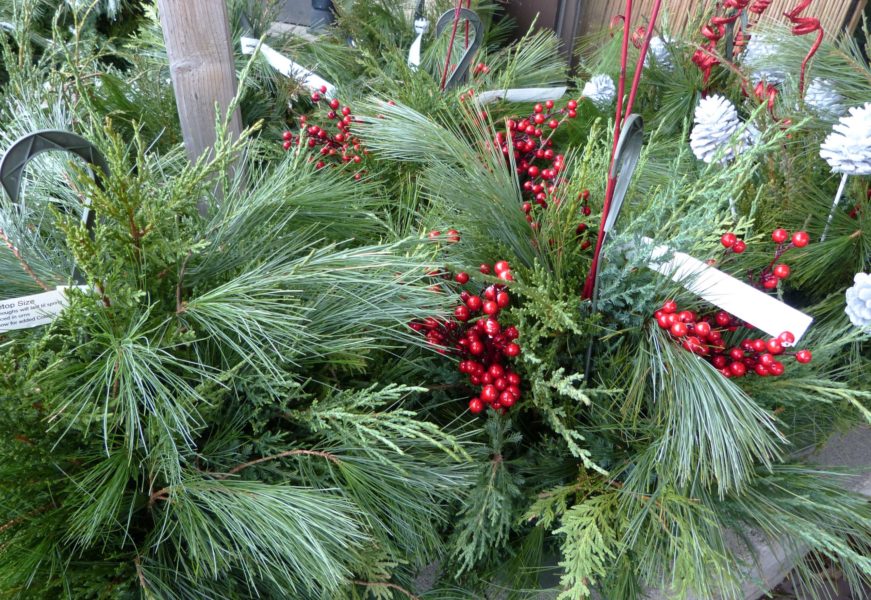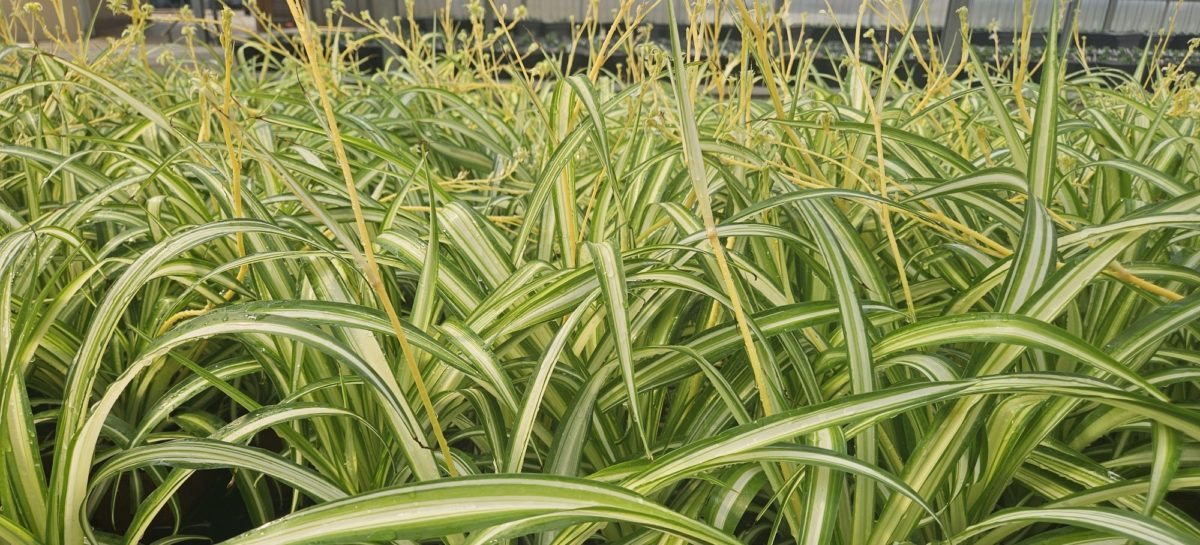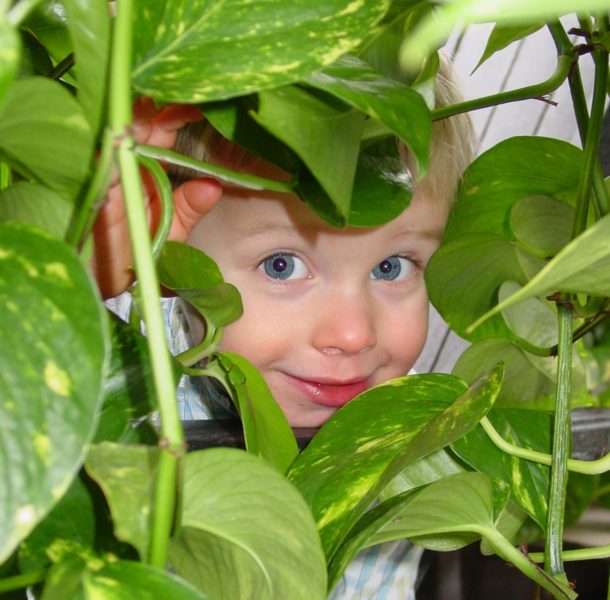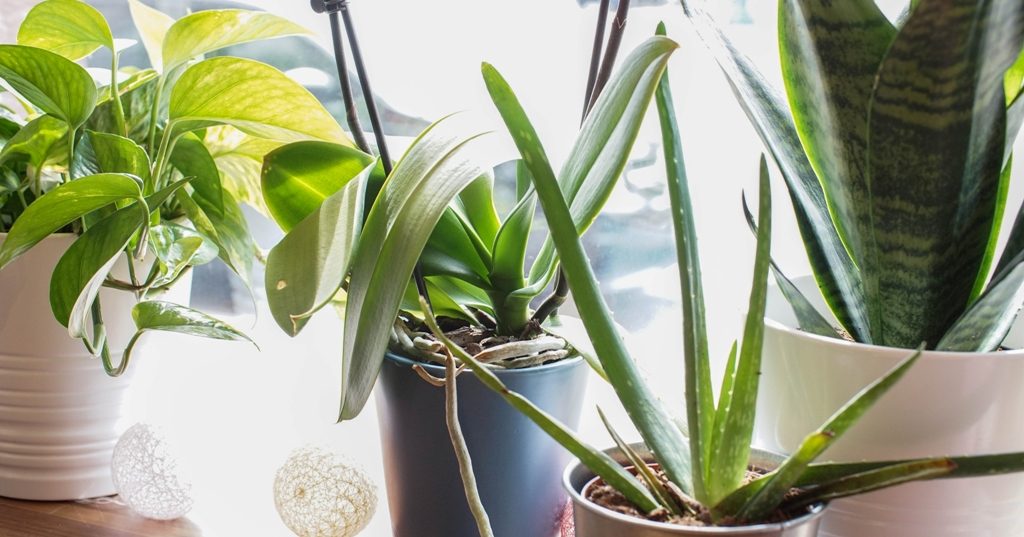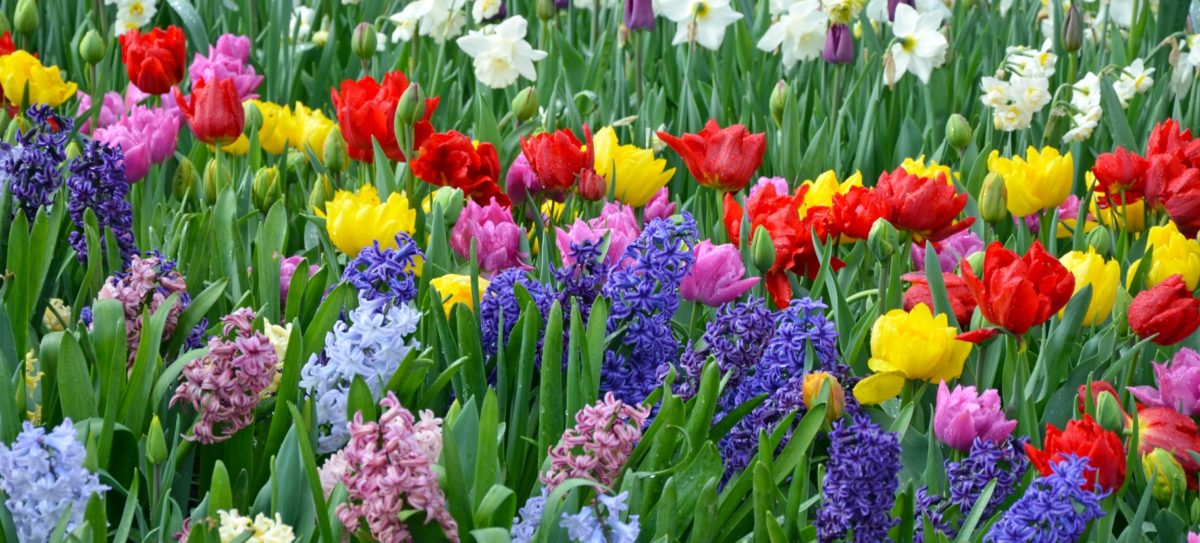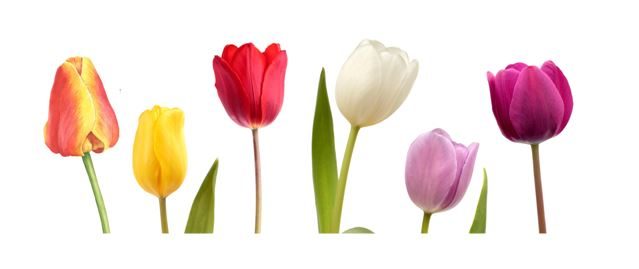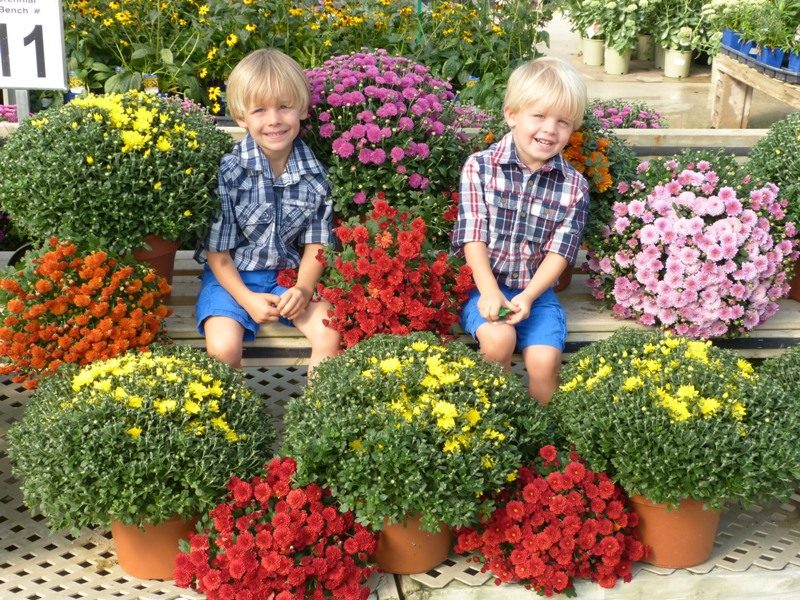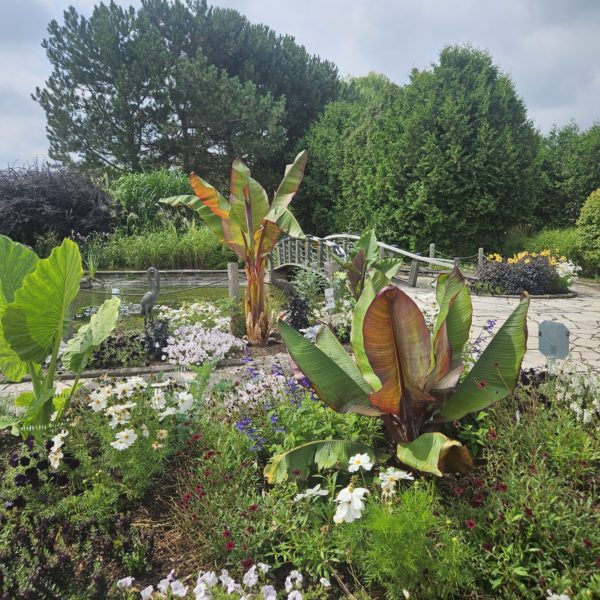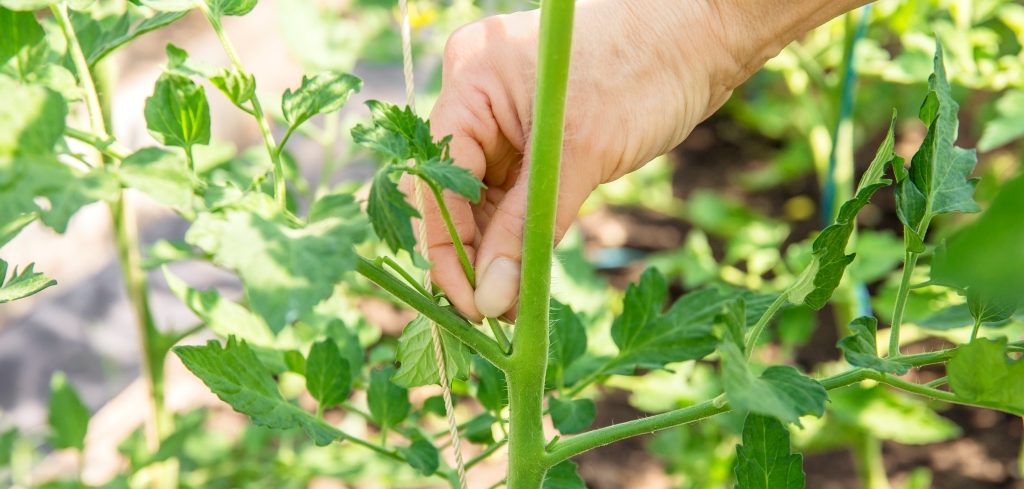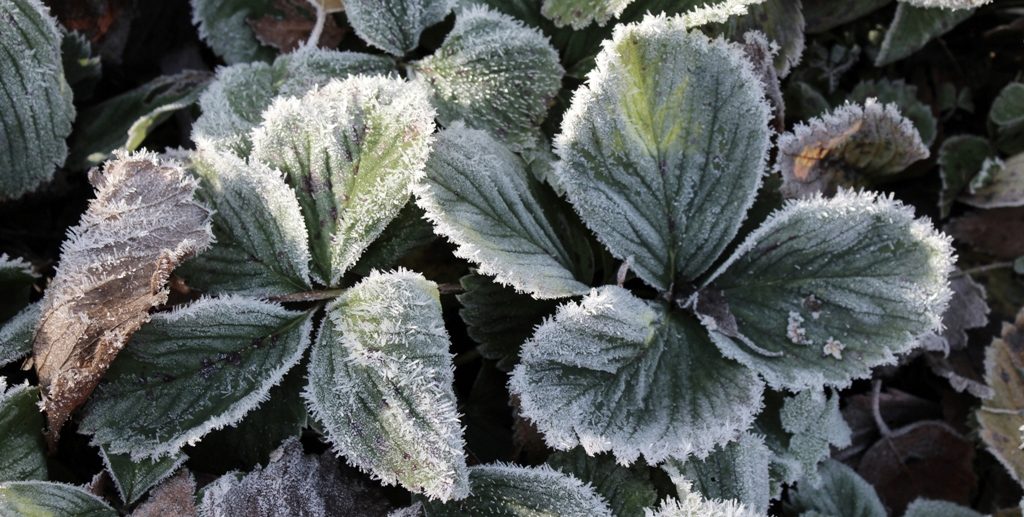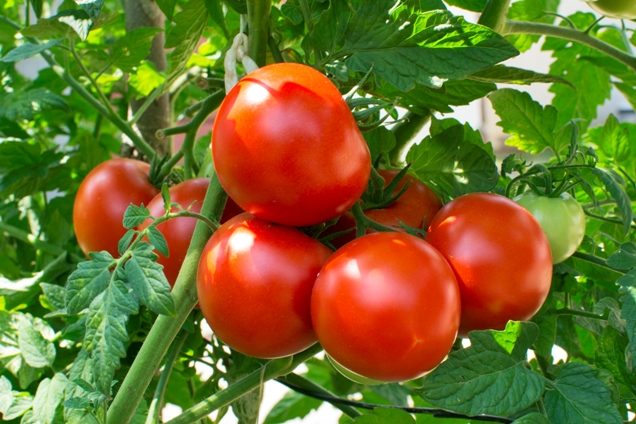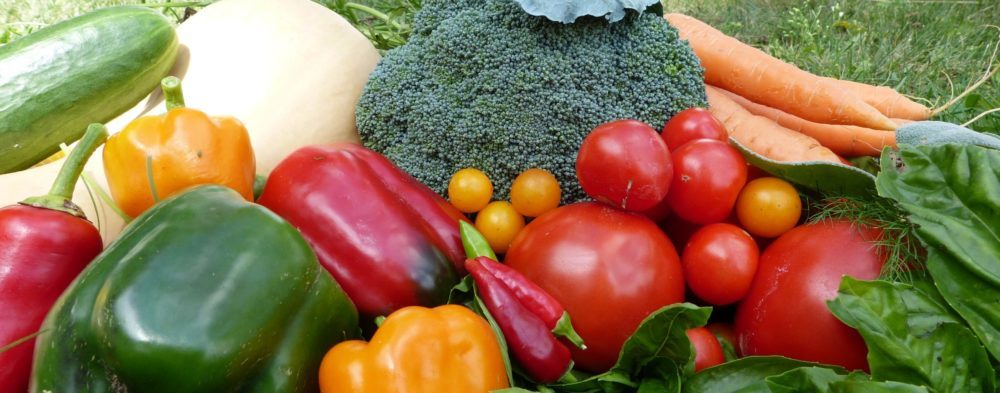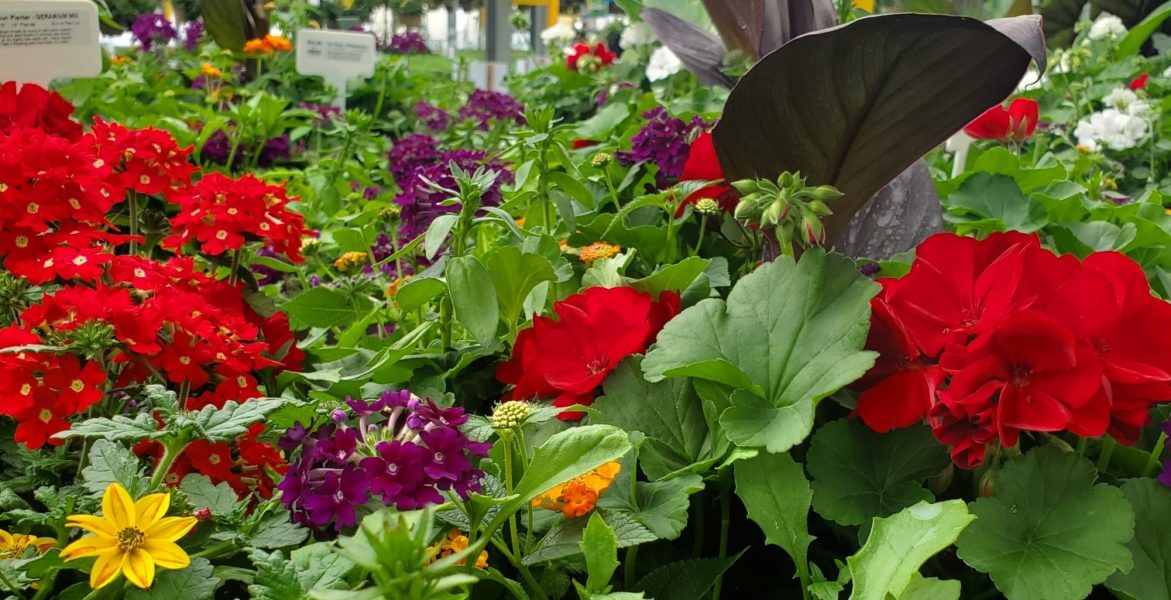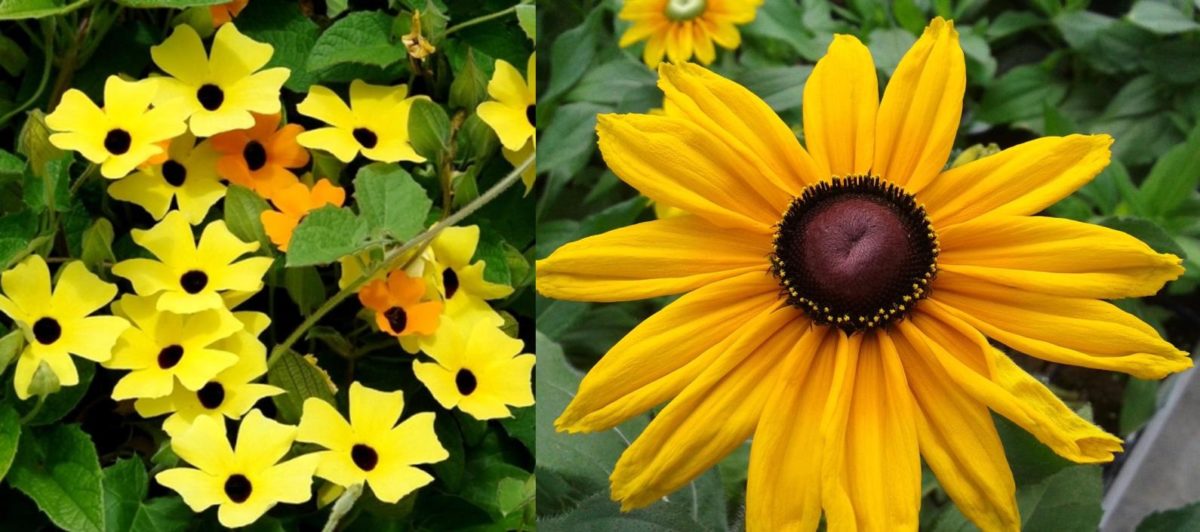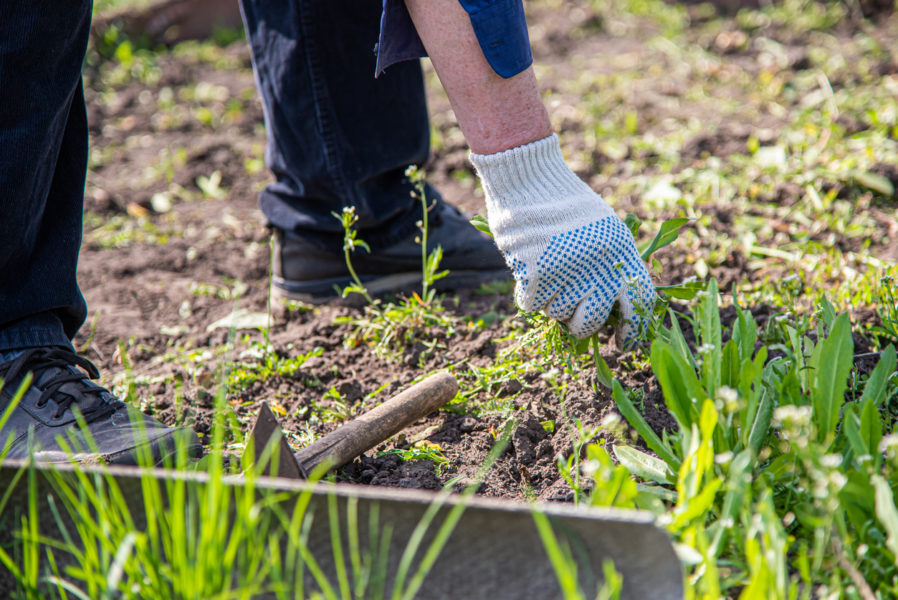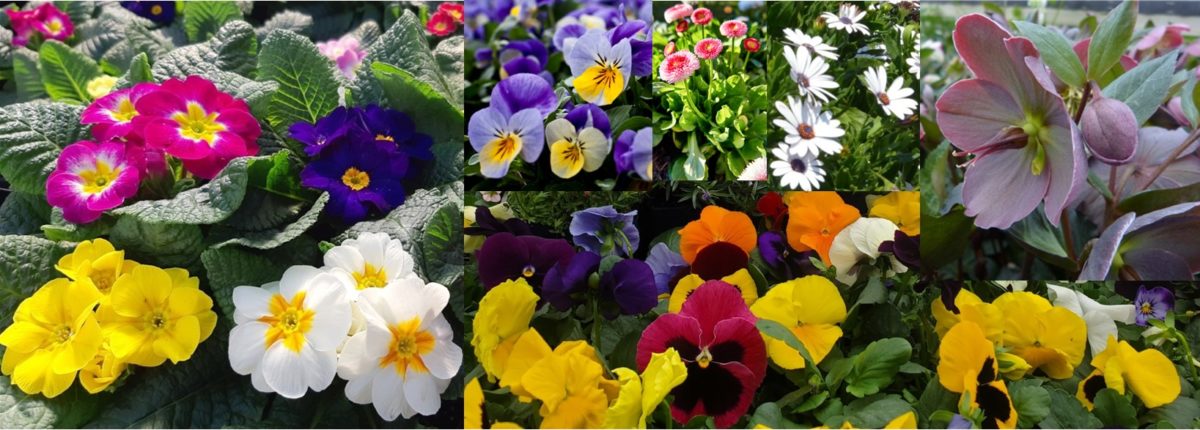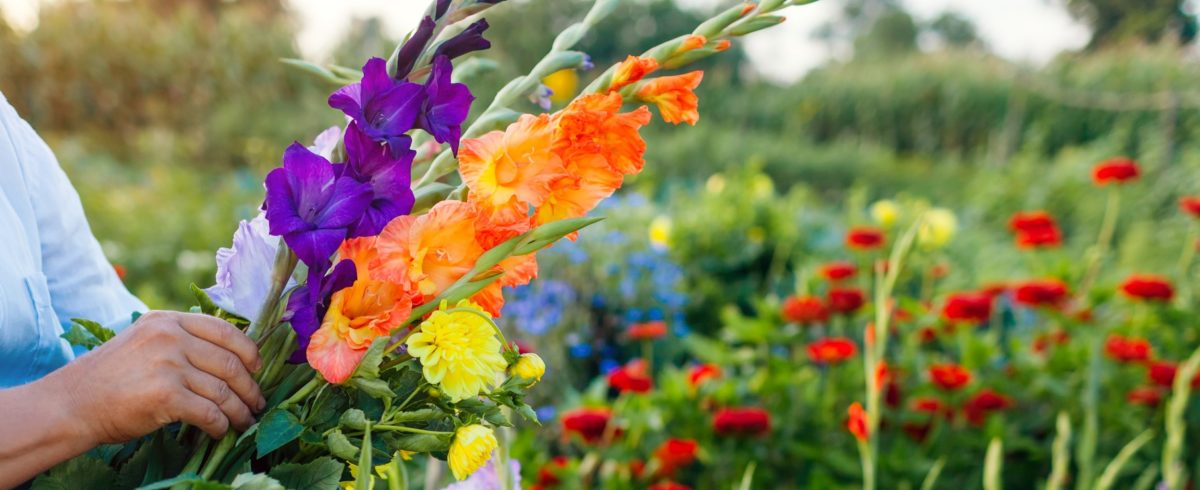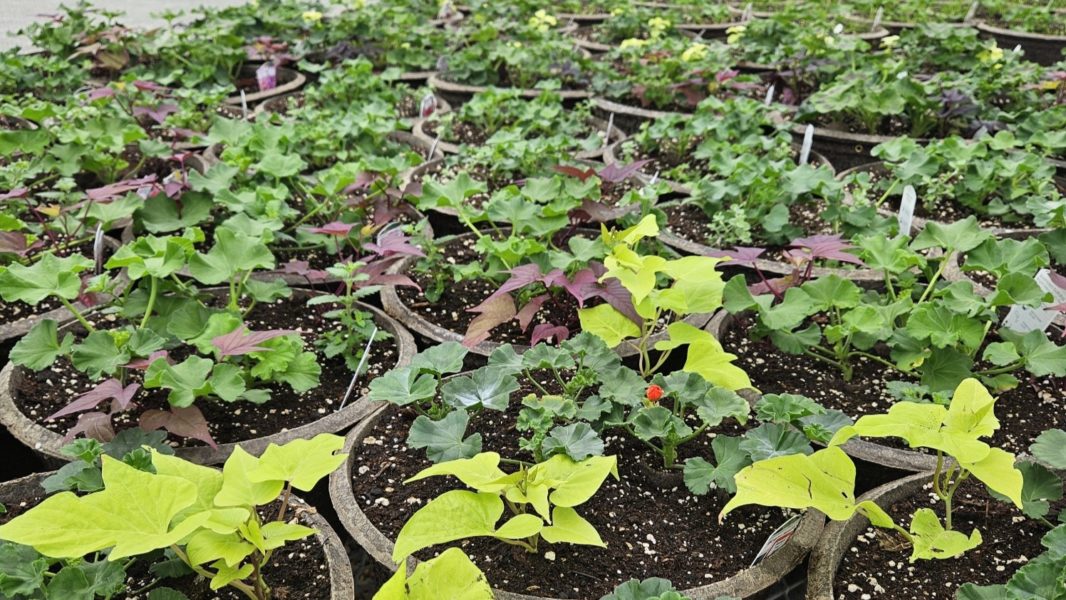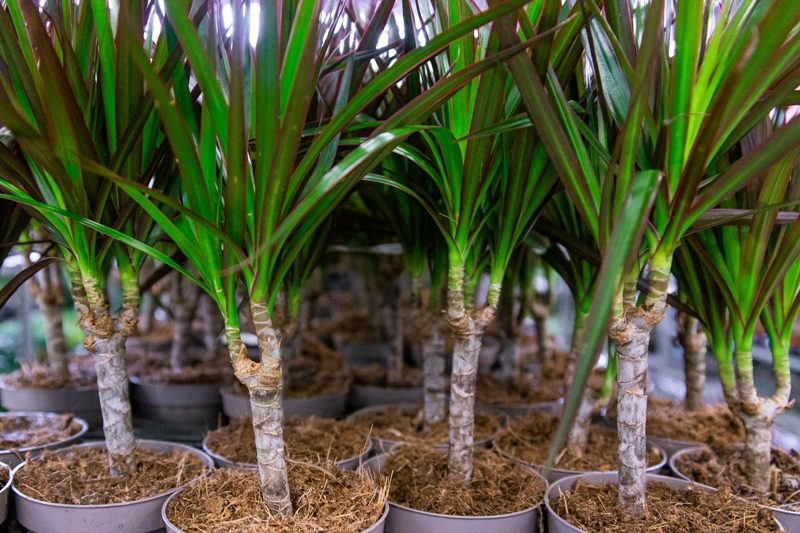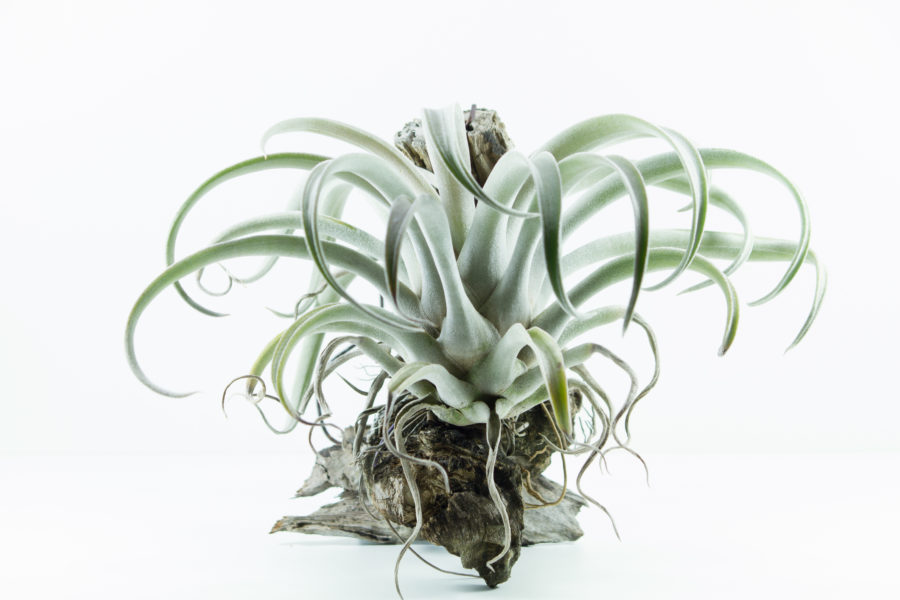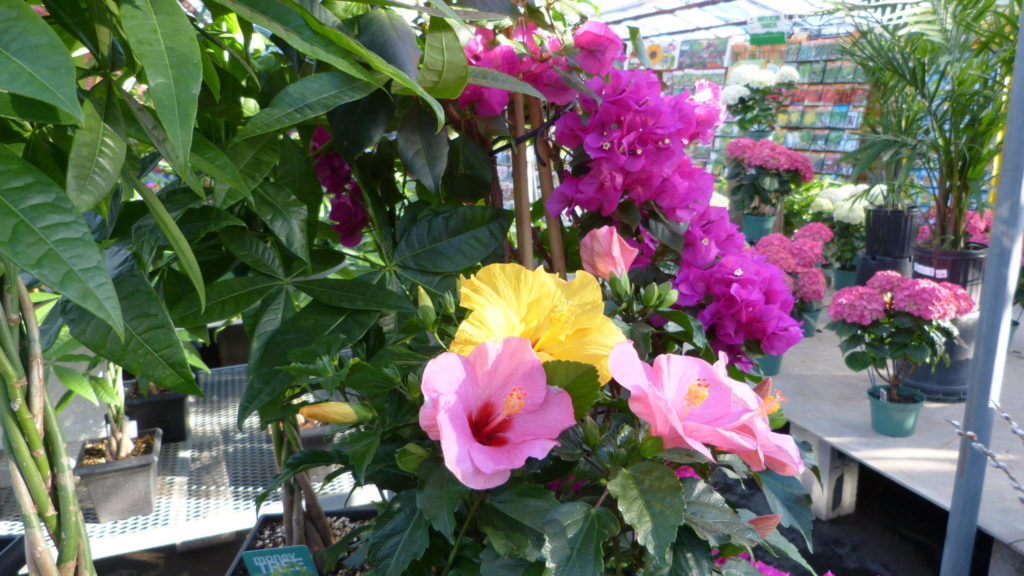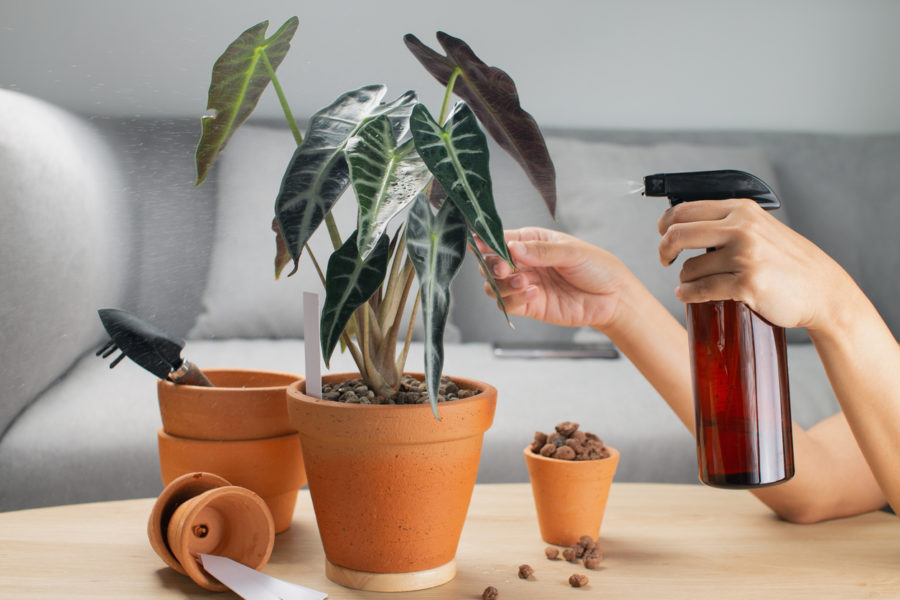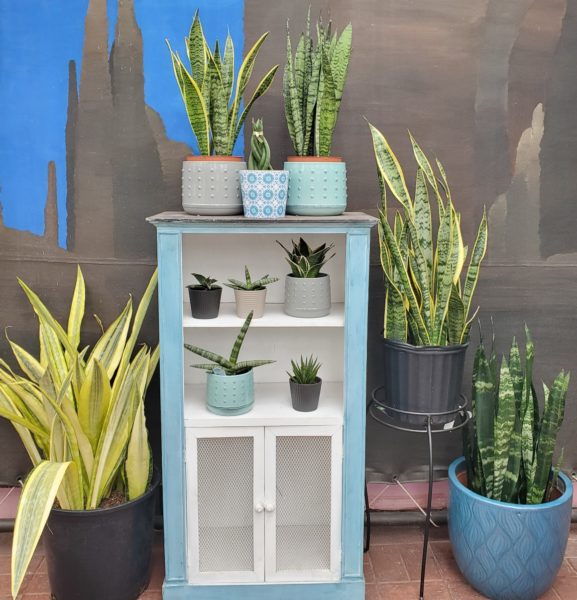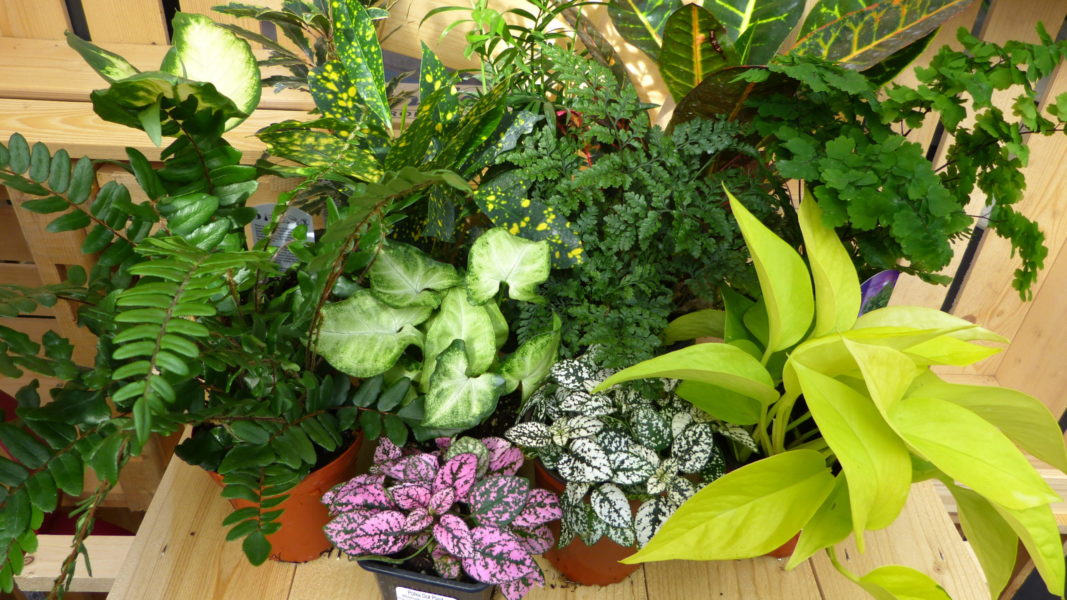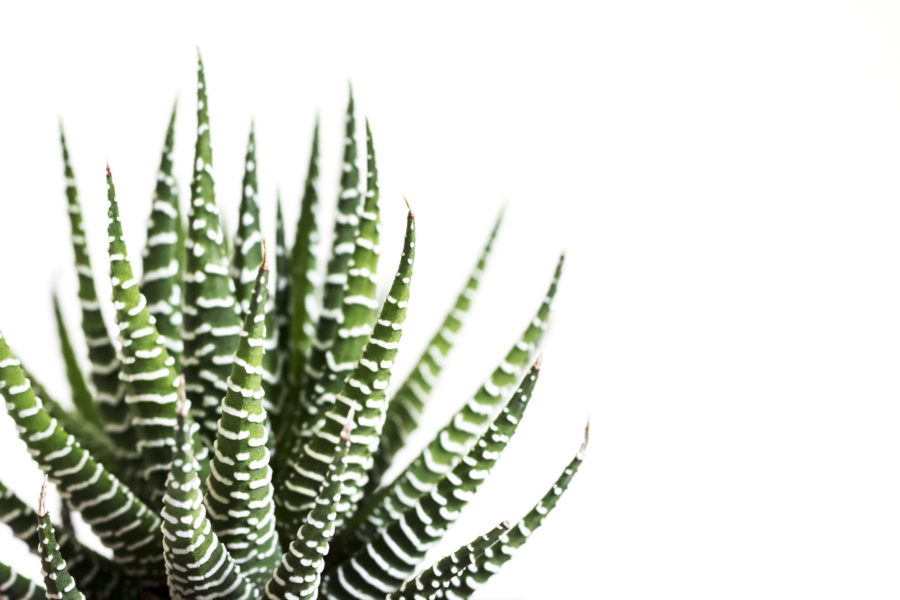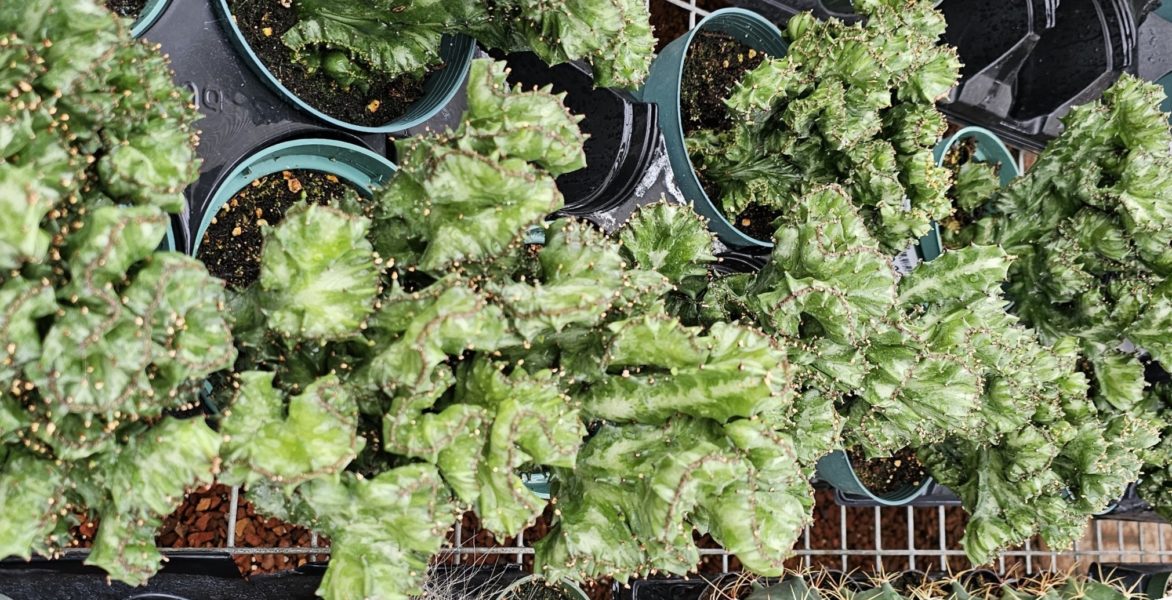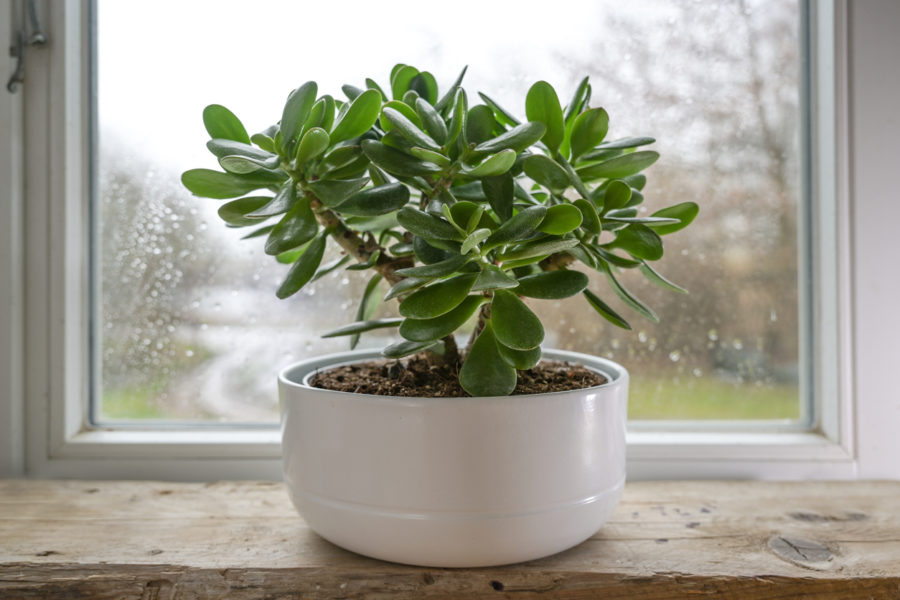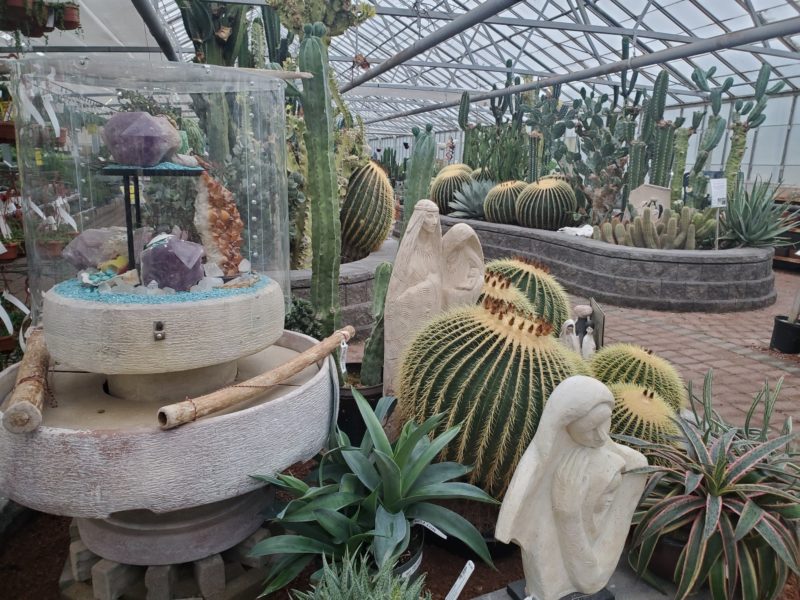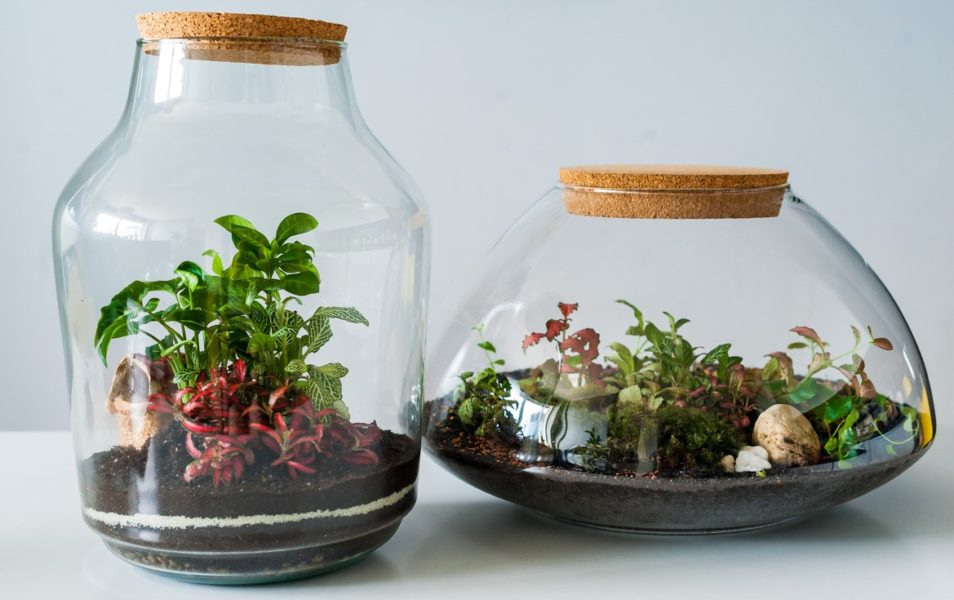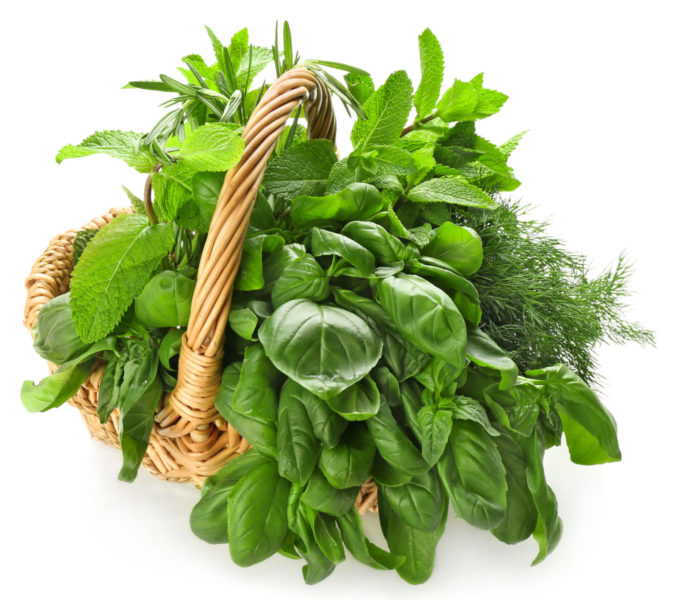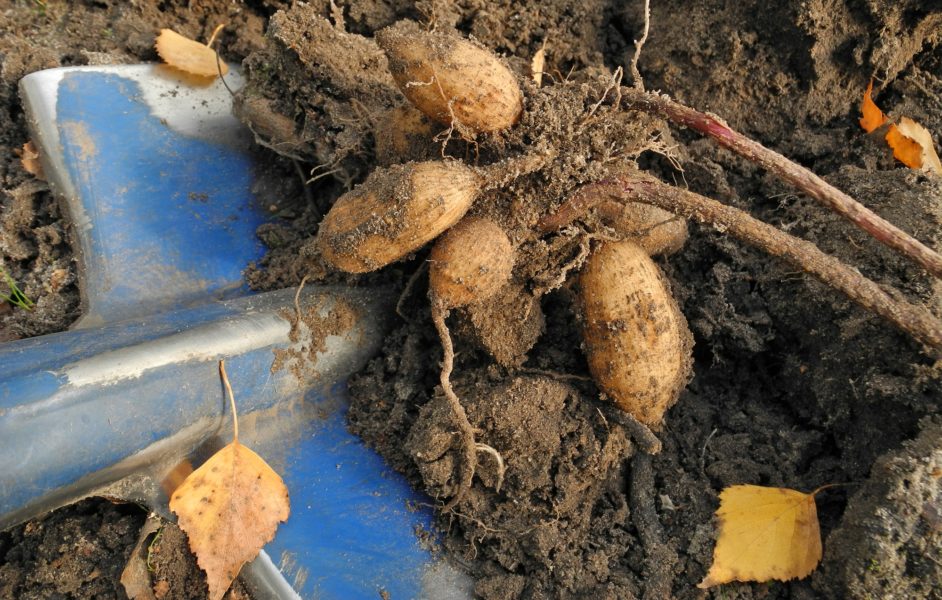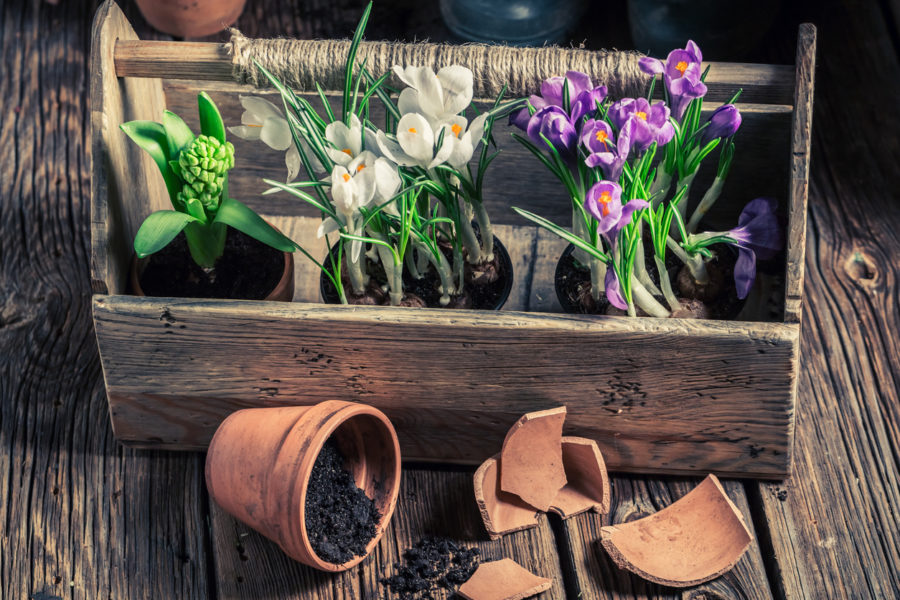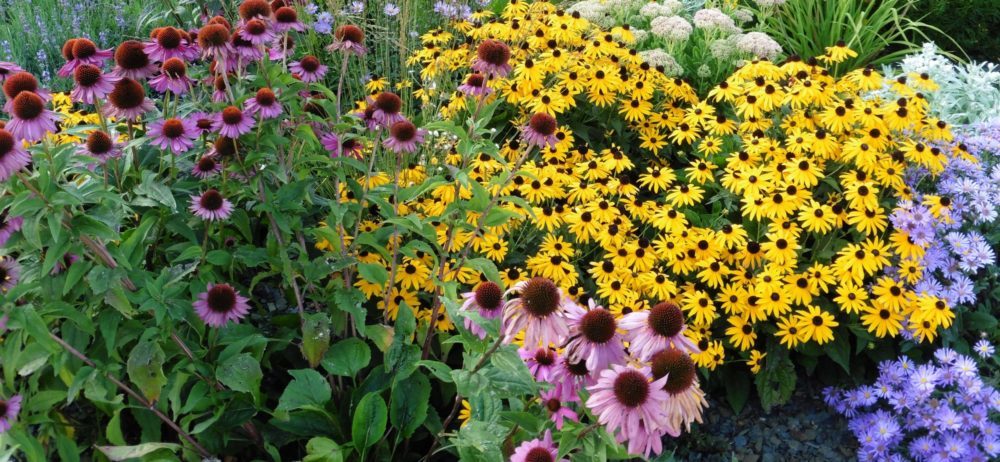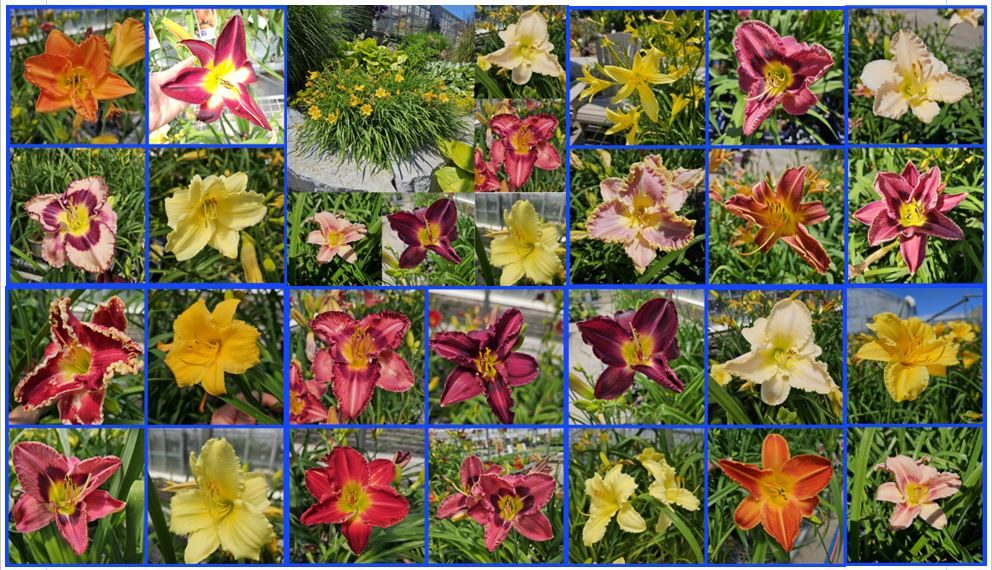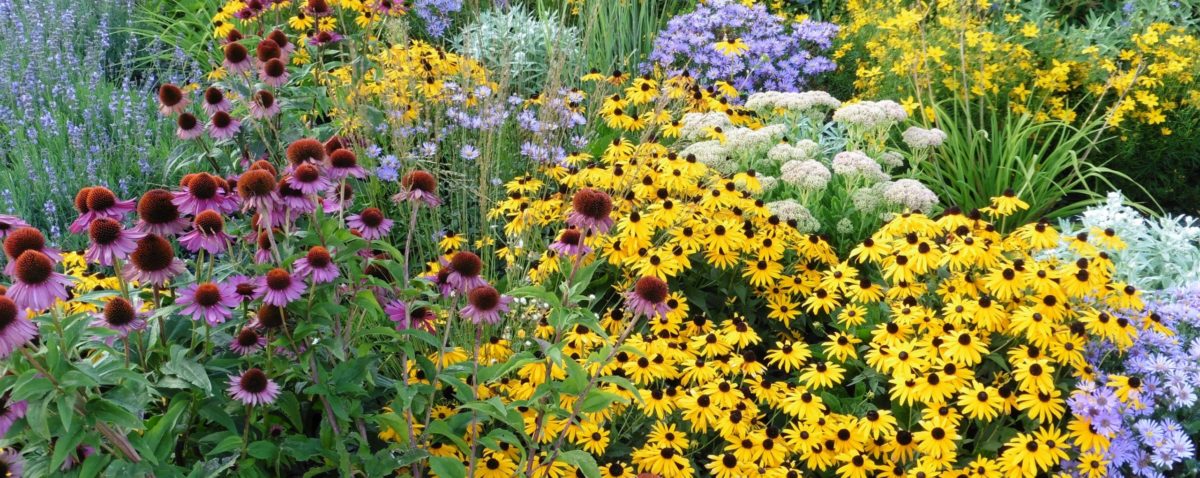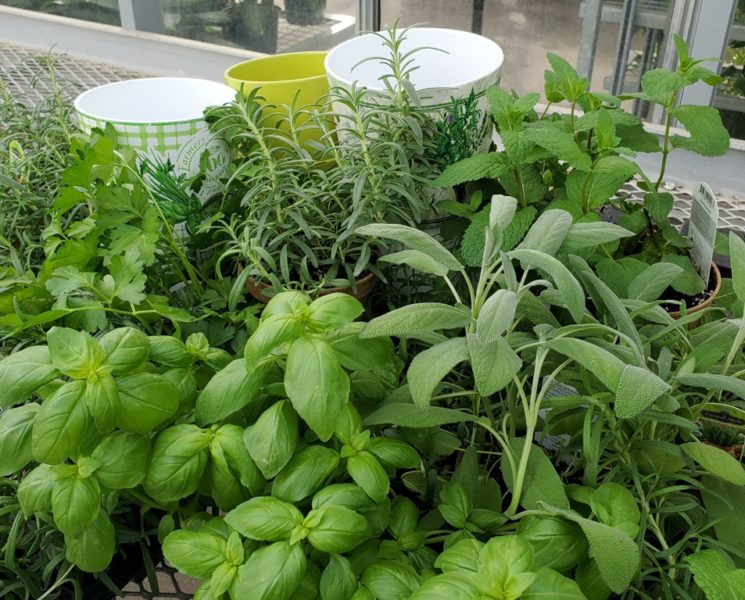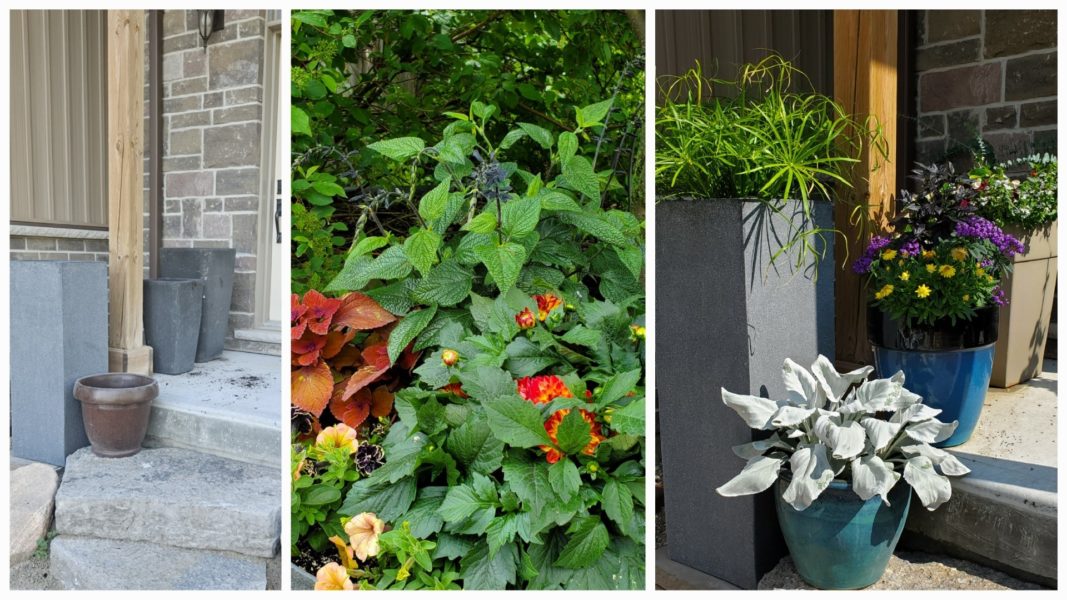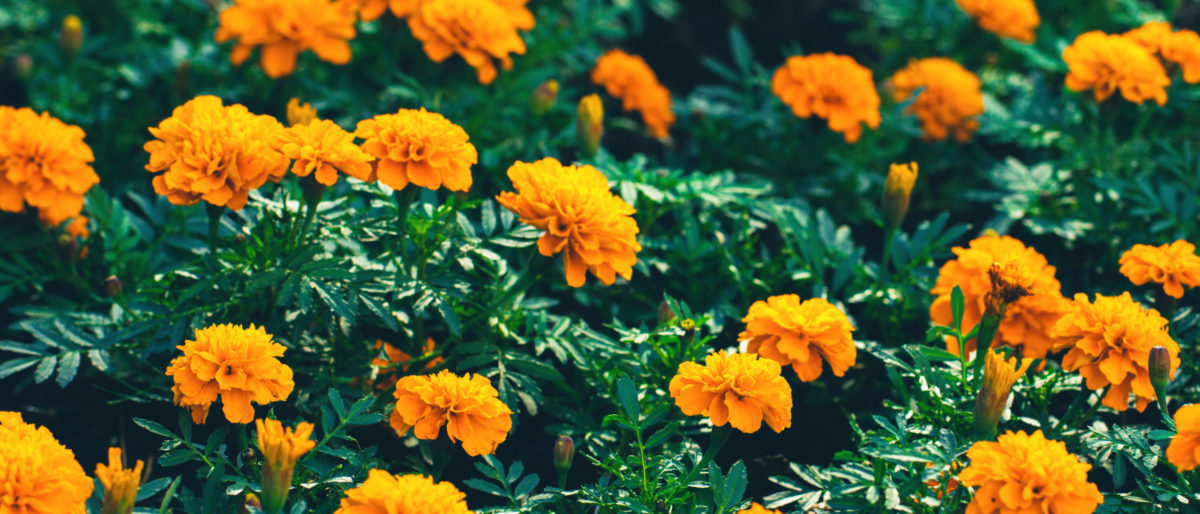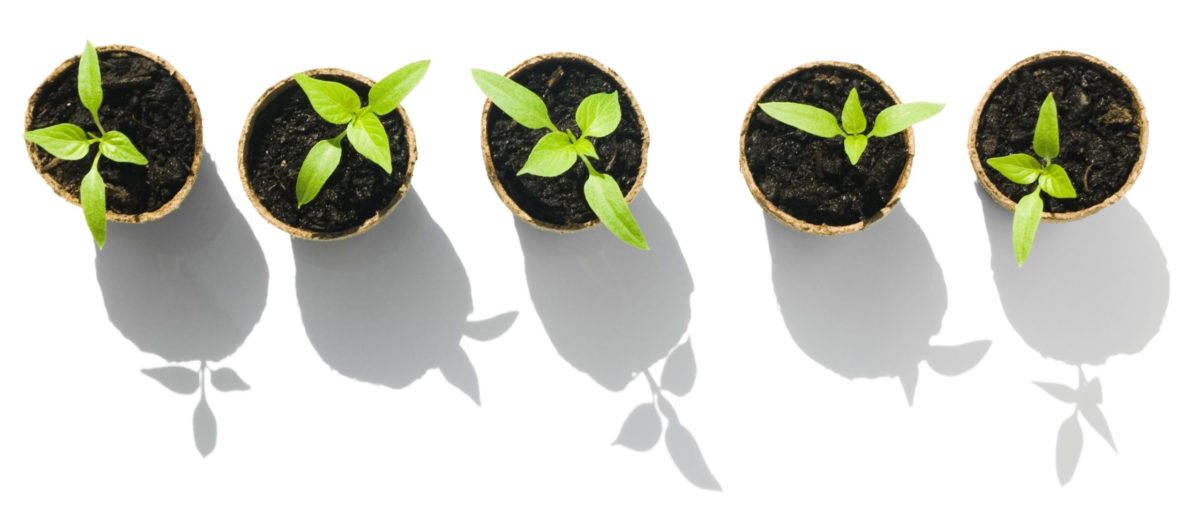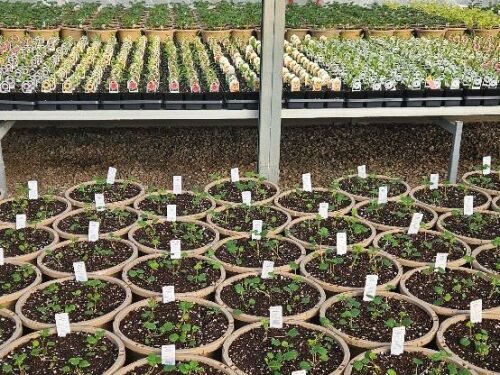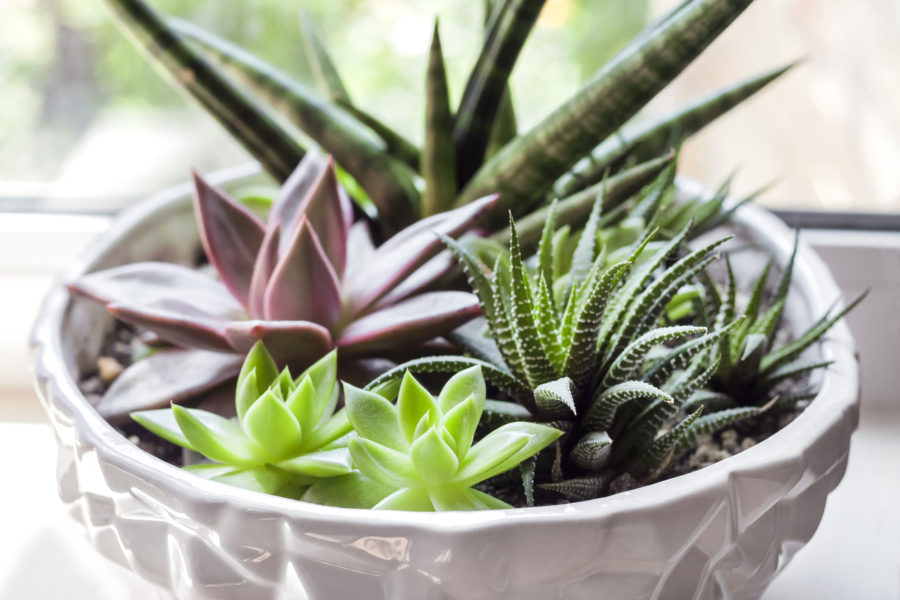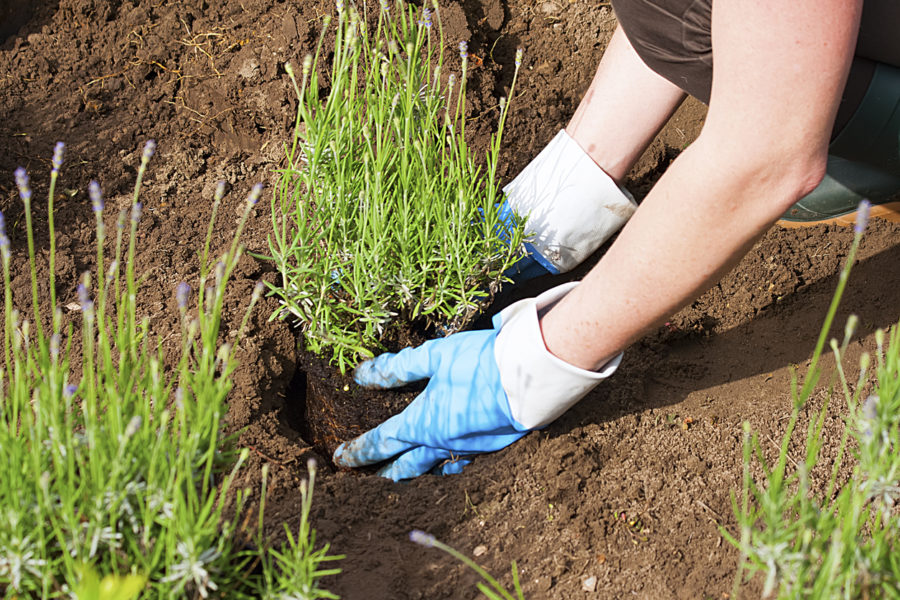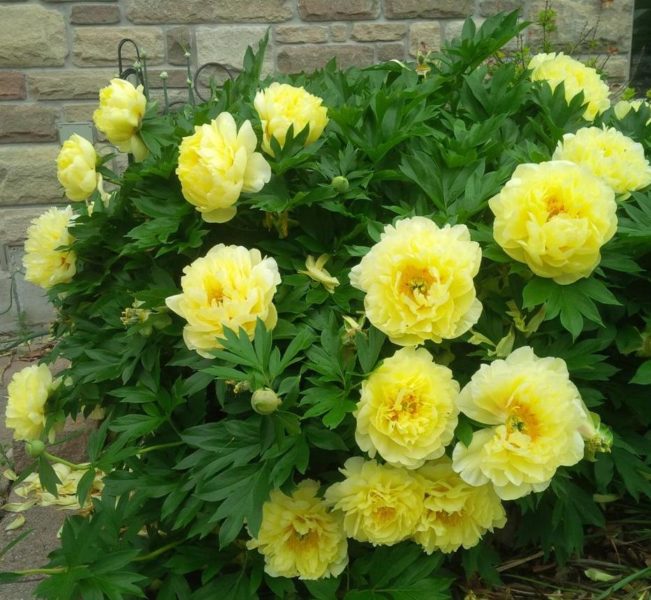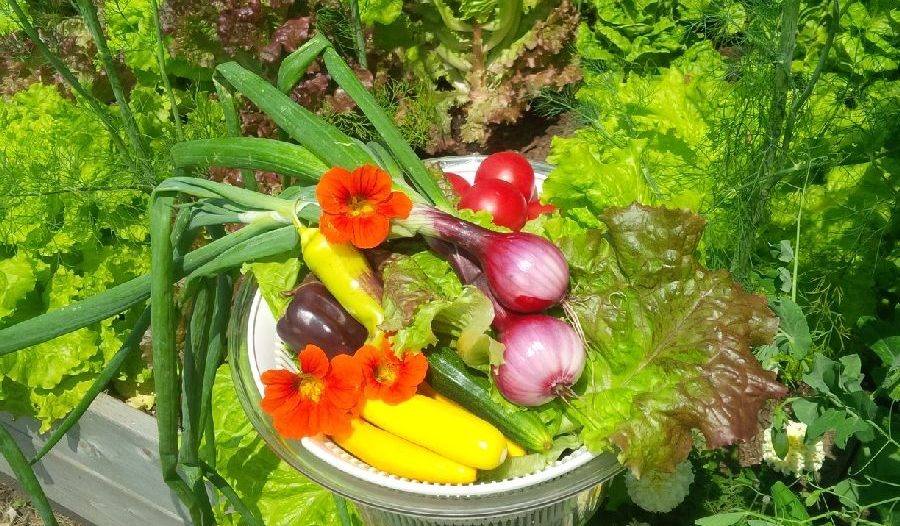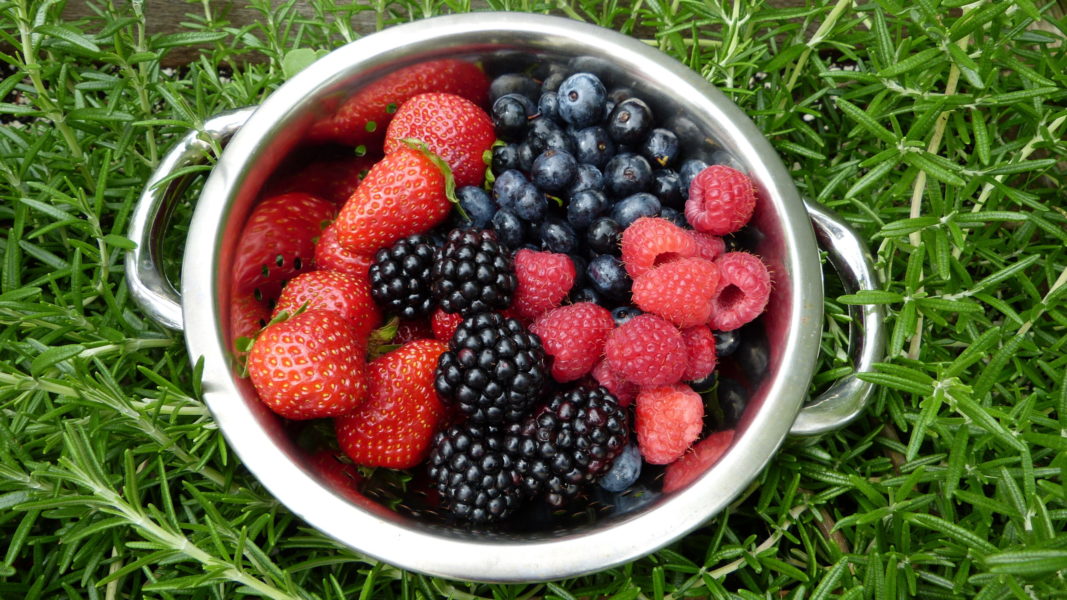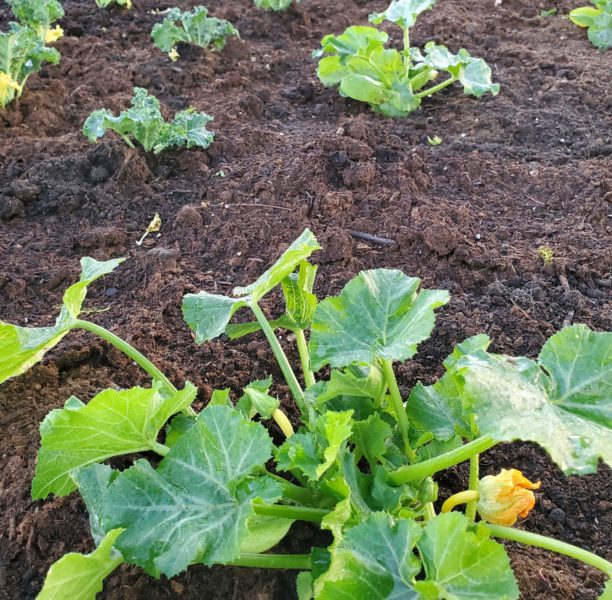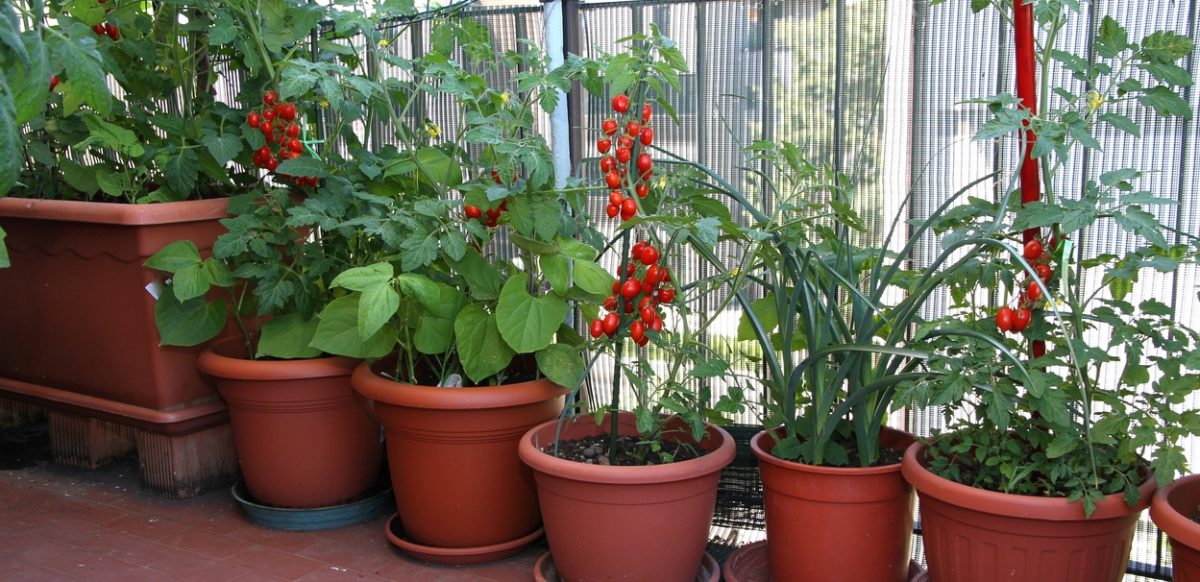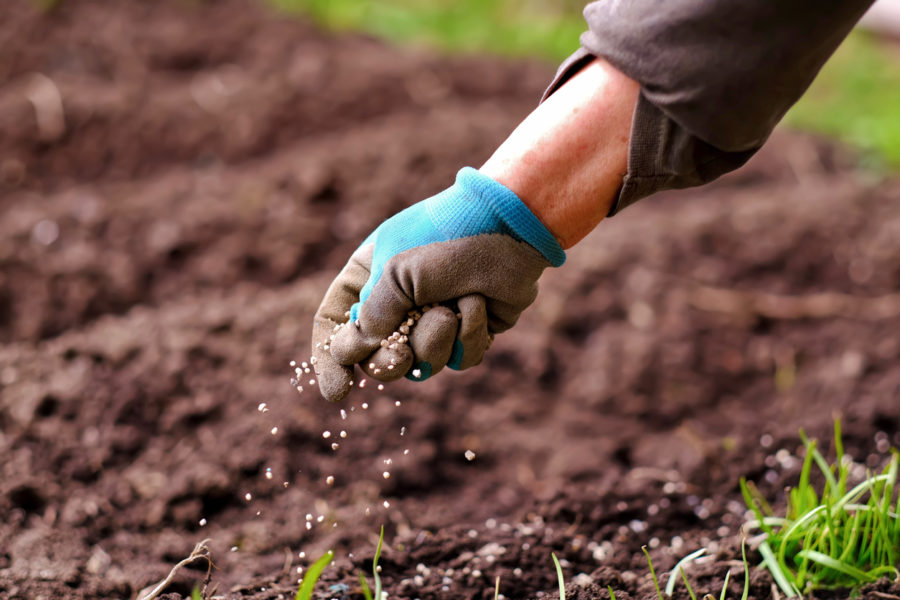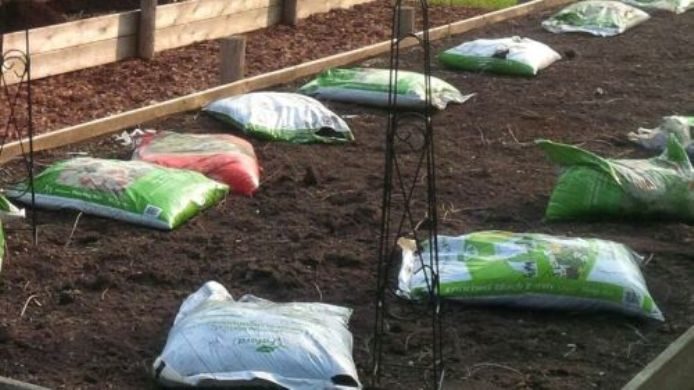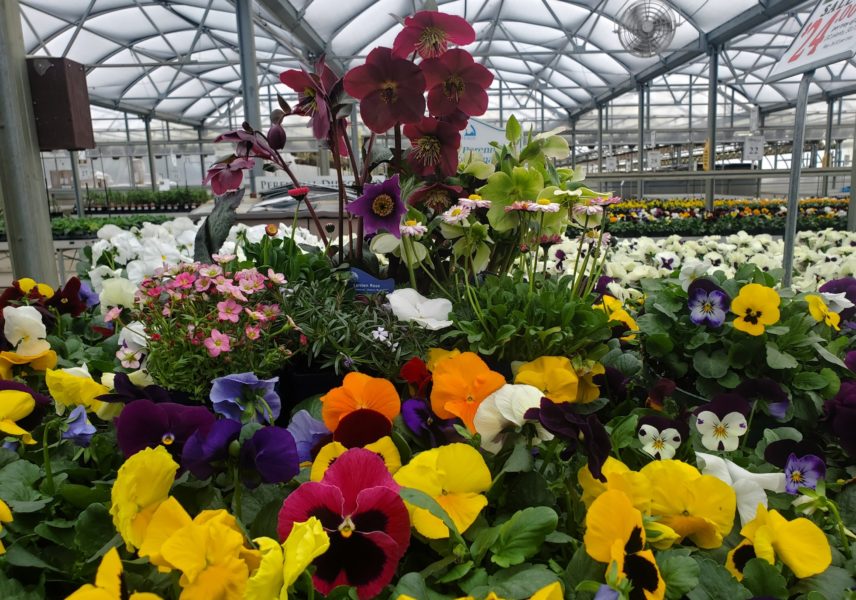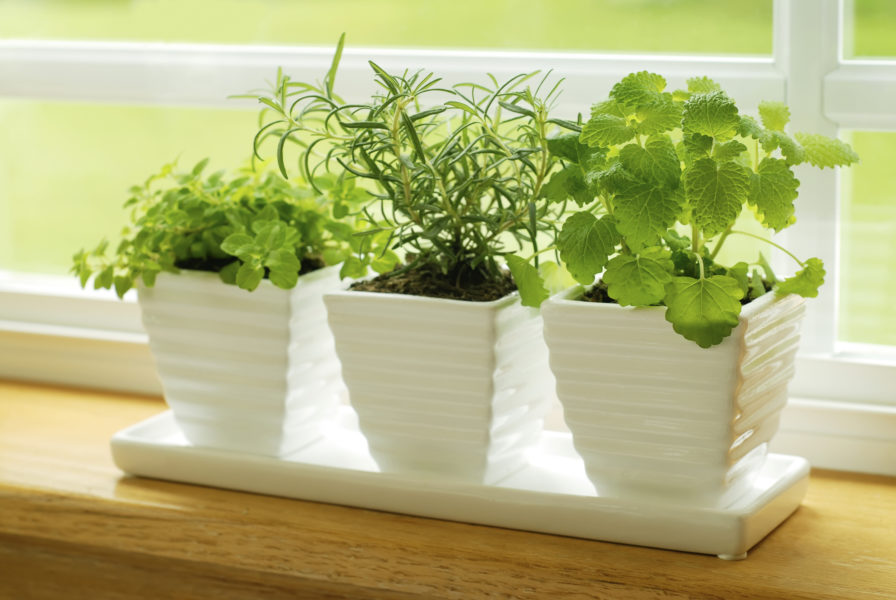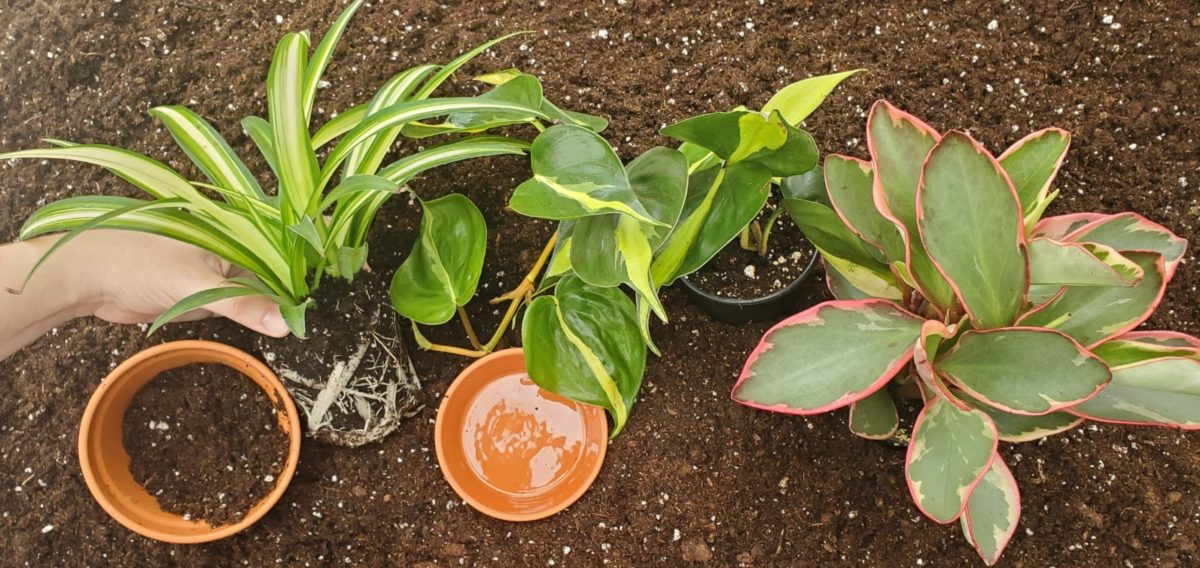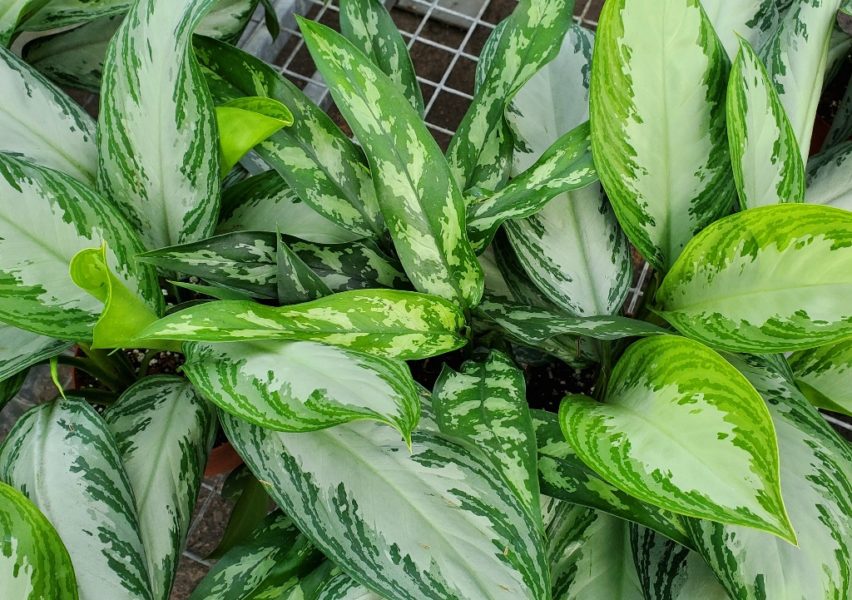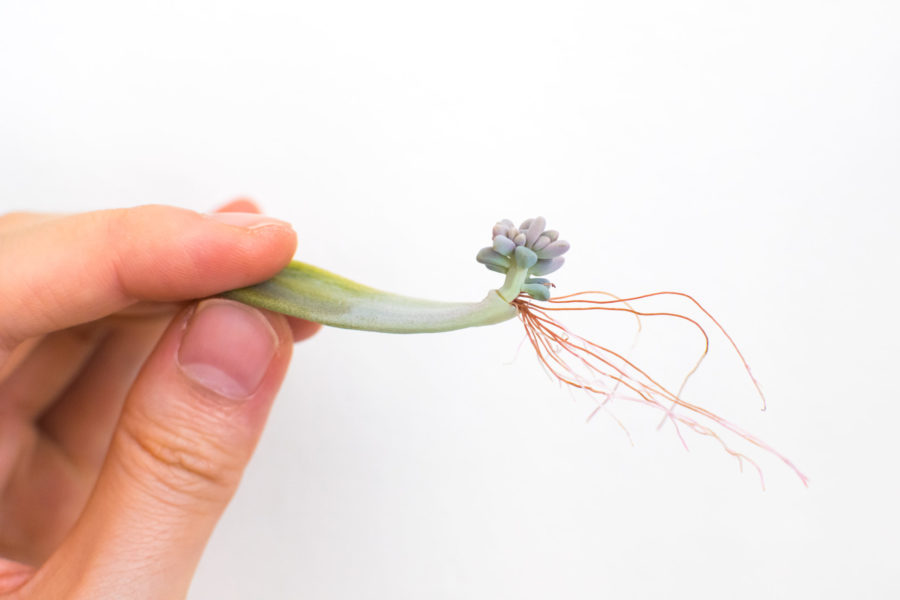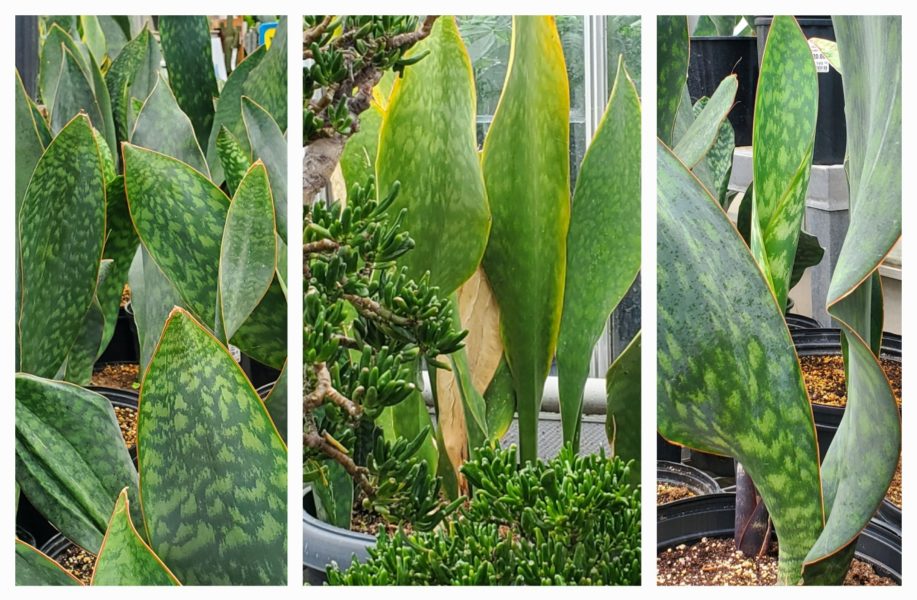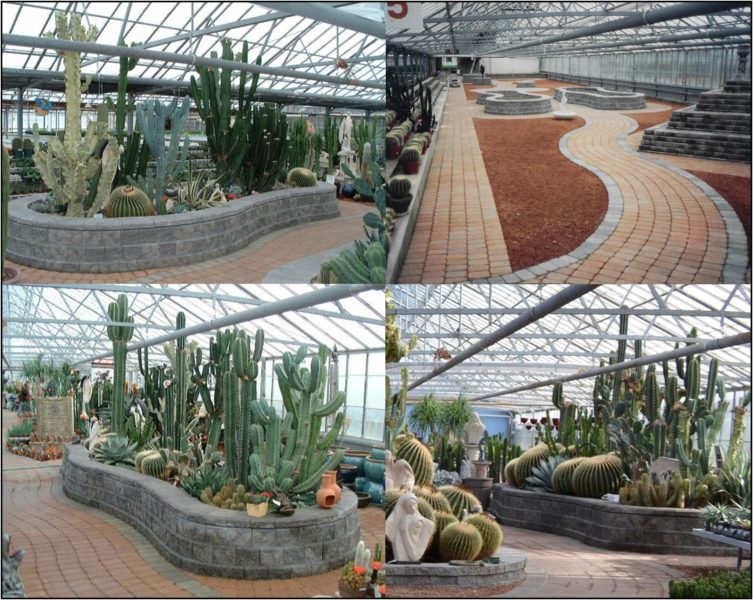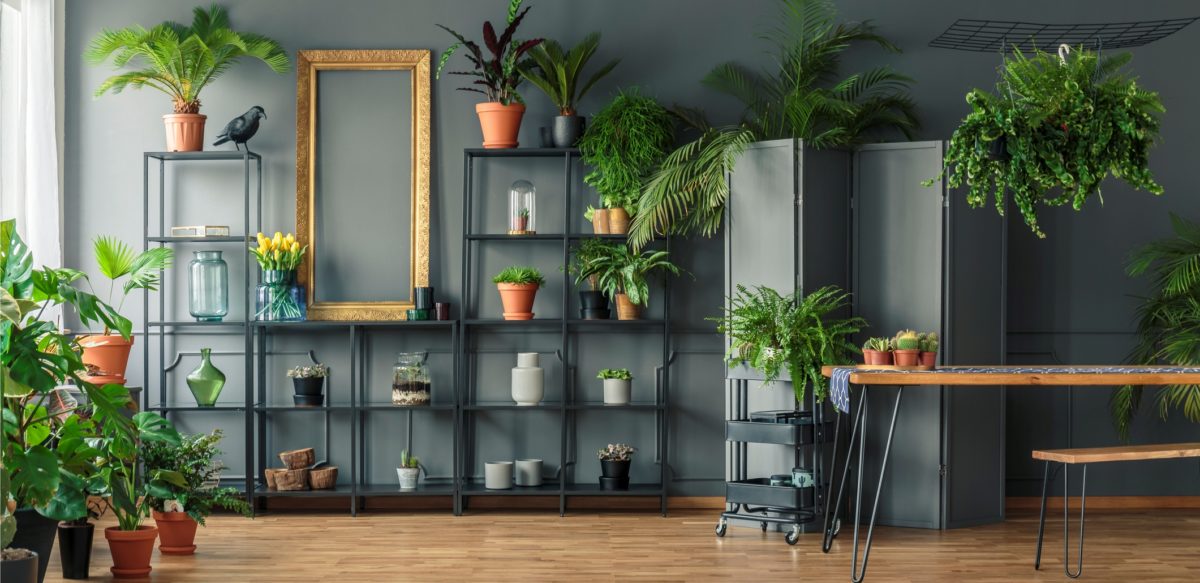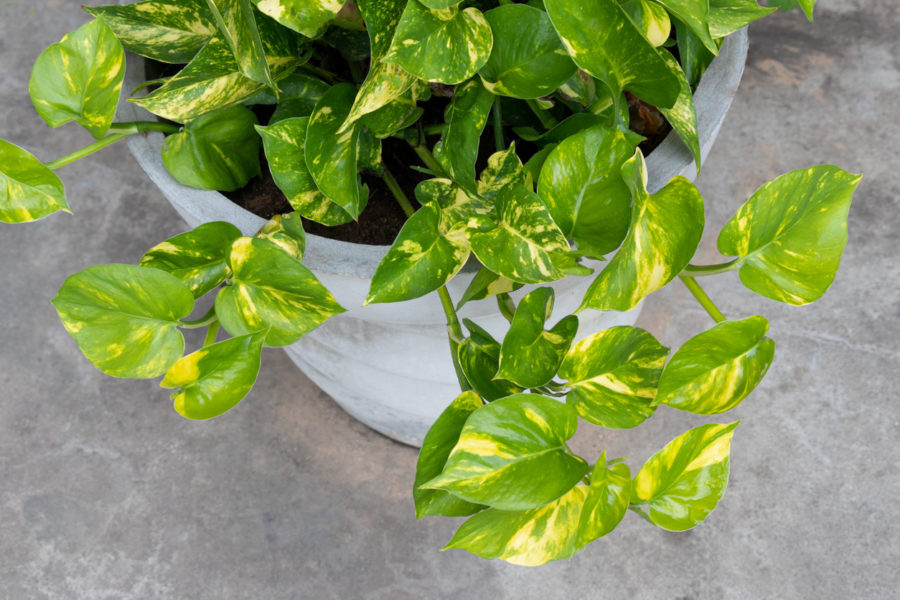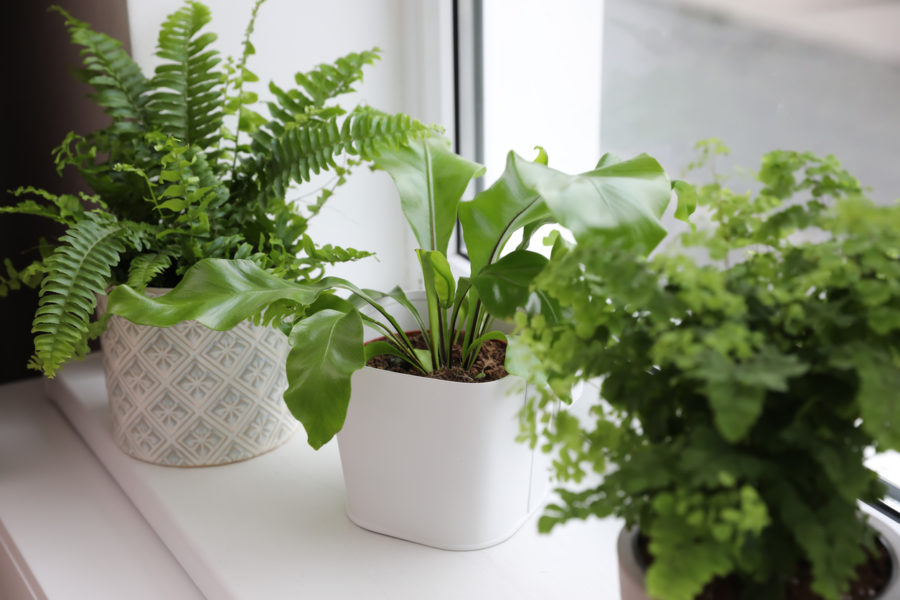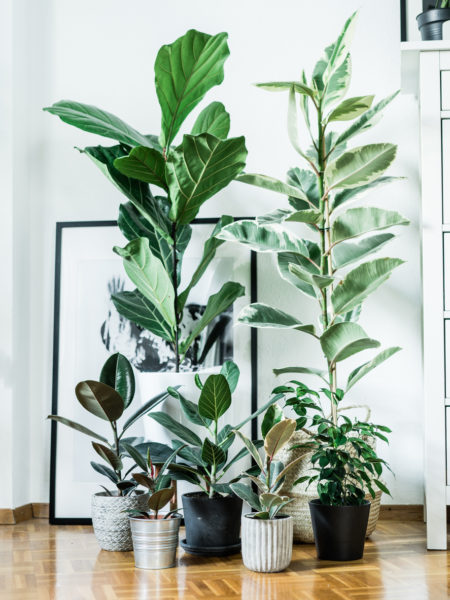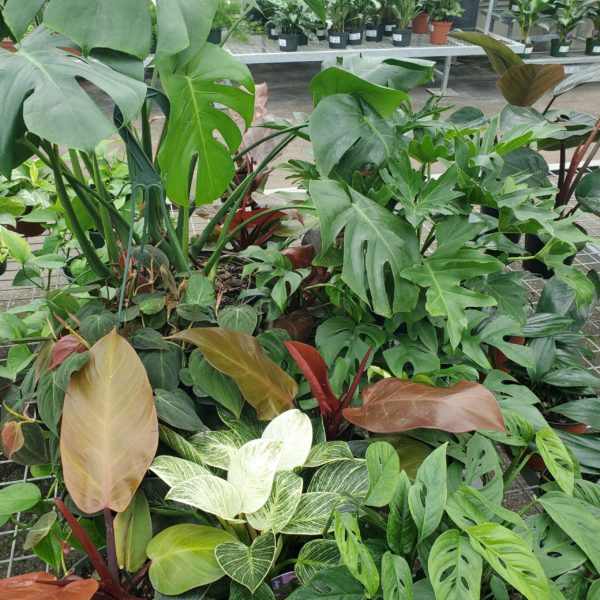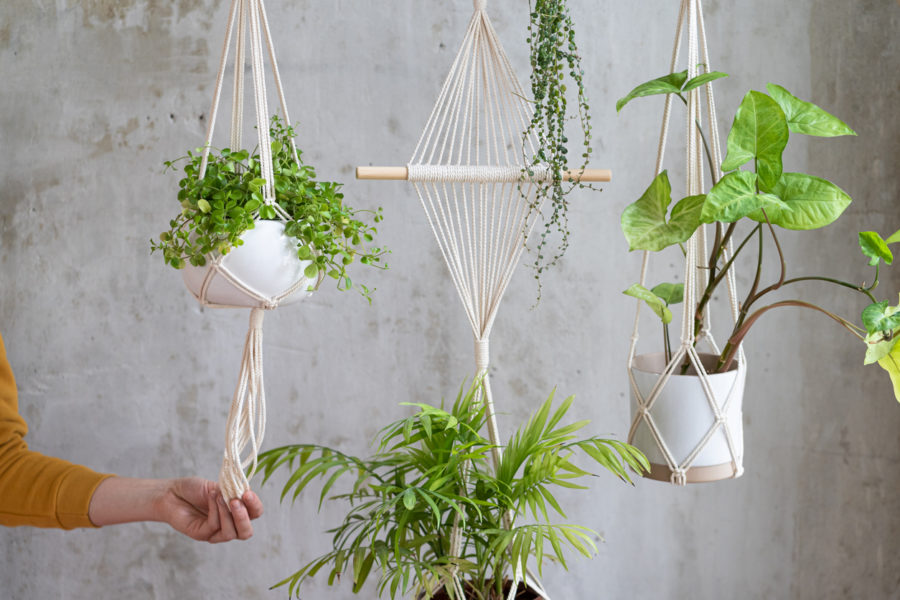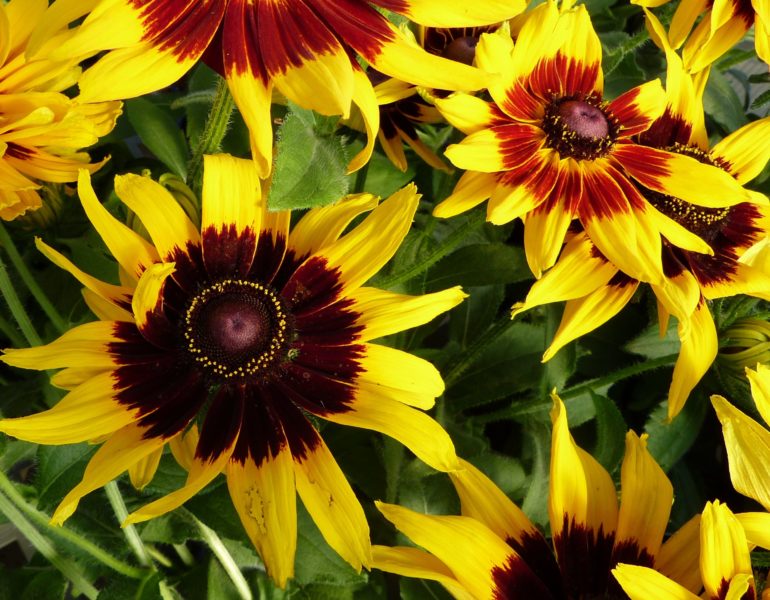Blog
Success with Tropicals – During the Winter Months
So you’ve filled your house with gorgeous tropical plants, and you’re well on your way to achieving your goals of creating an indoor climate that in no way reflects what is actually happening outside your window (snow? Sleet? Never heard of ‘em.) And yes, plants and people alike can adapt and thrive when placed beyond their natural environments, but there needs to be a balance; your sun-loving citrus probably won’t be happy in your dark basement and will cry for help something changes.
Tropical Houseplant Profile: Phalaenopsis Orchids
When you think of the words “exotic”, “graceful”, and “tropical”, what plant comes to mind? Your brain immediately went to an orchid, didn’t it? The Phalaenopsis Orchid, if we’re being specific, right? Looks like great minds think alike! Read More
Care for Your (Plant) Gifts Before You Give!
Many of us are turning to our local greenhouses and nurseries when it comes to holiday lists and gift ideas, and we love this idea for more than the obvious reasons! We all know by now the benefits of having plants and greenery in our homes and offices: self-care, mental health, mindfulness, air quality, the list goes on and on! And when you give someone a tropical houseplant, cactus, or even a small potted spider plant, you are showing the recipient that you care. No words are needed; even a tiny succulent says “I care about you”.
There is, however, the tricky balancing act of purchasing your plant gift and then keeping it alive until you can get it to its new owner. If you’ve got a particular plant variety in mind for those on your list, and don’t want to run the risk of losing out at the greenhouse, you might have to do your shopping weeks before the gifting date. And you want the gift to look its best, so how can you keep the plant thriving until it gets to its new home? Here are some basic plant care tips:
Feeding Our Feathered Friends!
There’s nothing like a bird’s sweet song to help blast away the winter blues, and it’s so easy to bring their delightful voices to your own backyard or balcony. Whether you purchase a bird feeder or simply scatter seeds over the snow, our feathered friends will be grateful for the winter snack. You can even create your own simple feeder with pine cones, peanut/nut butter and seeds! And a bird feeder isn’t just a great gift for the birds, but for anyone on your holiday list, from kids, grandparents, and even teachers!
Read MoreOur Top 10 Low Light Houseplants!
The shortest day of the year is quickly approaching, but don’t worry – it means that the days will start getting longer very soon! And while it will take a few months for us to get back to the warm, sunny days of spring, we can help bring a little nature indoors with some low-light tolerant houseplants. Check out our list of Top 10 low light tropicals below (bonus: they all help clean the air, too!)
Proper Watering Techniques
We get a lot of plant questions here at Belgian, like A LOT! And since most of them revolve around watering, we figured it’s about time we put all our wet wisdom into one big blog post. Let’s dive in!
Amaryllis: the Perfect Holiday Décor
Holiday cheer comes in many forms: presents wrapped in colourful paper, bright lights and colourful ornaments dazzling our eyes at every turn, and of course all the parties! But when it comes to dazzling blooms, not many can hold a candle to the glorious Amaryllis. Available in stunning shades of red, white, pink, and bicolour combinations, the huge blooms stand atop some of the sturdiest green stalks in the Tropical world. So whether you’re looking for stunning décor for your next party, a gorgeous gift for a wonderful person or even yourself, here are some tips to keep your Amaryllis thriving throughout the season:
Festive Finds in our Tropical Greenhouses!
There is never a dull season at Belgian Nursery. Even when the temperature drops, new plant shipments are arriving filled with varieties that we simply cannot get in spring and summer! Every plant has its season to shine, and these beauties just happen to prefer the shorter days of fall and winter to show us what they’re made of:
Decorate with Fresh Greens!
Did you know that you can decorate your outdoor spaces all year long, even during our cold Canadian winters? And it’s all thanks to our friends, the evergreens! There are plenty of varieties out there that hold on to their foliage regardless of the chilly weather, which means lots of options when it comes to decorating your homes for the winter holiday season.
Tropical Plant Profile: Spider Plant
Just about everyone knows what a spider plant is, right? You see a hanging basket filled to bursting with long, narrow, arching leaves that are typically green with a wide central stripe of bright white. And those extra stems, also long and arching, that are filled with tiny baby plants are a dead giveaway, too. So, if spider plants are so common, why are they still so popular?
The easy answer is that they are just that: easy! Spider plant, sometimes called “spider ivy” or “airplane plant” but botanically known as Chlorophytum comosum, can handle most light conditions, from low to bright, which means they can go just about anywhere in your home that has a window. They also have thick rhizome-like roots that can store quite a lot of moisture, so they can handle longer periods between waterings. They are very sensitive to chlorine and other additives, so avoid using treated water and never use softened water on any of your plants.
But where they really shine is in the Clean Air Houseplant category! Back in the 1980s, NASA took a bunch of tropical houseplants up in a rocket and studied their effects on the confined airspace within the space station. The Clean Air Study, as they called it, found that spider plants were one of the best performers when it came to cleaning toxins out of the air. Of course, there have been many other similar studies done over the years, with results showing that tropical houseplants (and spider plants in particular) do indeed clean the air and increase humidity in the home. Isn’t that nice of them?
If you’ve ever had a spider plant, you’ll notice that they’ll Read More
Easy Care & Clean Air Tropicals
Adding some tropical greenery into your home and/or office is a great way to (literally) liven up your living spaces, and there are many easy care options for anyone who may not have the greenest of thumbs. By “easy care” we mean that these varieties require the basics to survive and thrive – light, water, warmth, and occasional feeding – without the need to check up on them constantly. So your Spider Plant will easily forgive you if you forget to water it for a day or two.
Fall vs. Spring Garden Clean Up
For most perennials, whether you cut them back in the fall versus spring is a personal choice, and one that mostly depends on when you have the time to do the job. If you’re super busy in the fall with family/friends/school/work/everything else and can’t get to the garden, it’s absolutely fine to wait until early spring to finish the clean up. Just be sure to get out into the garden in early spring before the new growth starts to appear on your perennials; clearing away all the old growth and winter damage will help your gardens grow and thrive.
Houseplants in Autumn
Fall is a beautiful season: the leaves start to change, the days start to cool, and we all start getting our sweaters out of storage. The sun is also setting earlier and rising later, which means shorter days and less hours of sunlight. Such seasonal changes can affect the health and wellbeing of our beloved indoor houseplants; as the days shorten, our foliage friends will slow their growth and decrease their water requirements. It’s up to us, their human caregivers, to adjust the frequency of our watering schedules according to their needs. Some varieties may even benefit from a good fall trim to help with their adjustment. Read More
Fall Bulbs: Plant Now for Spring Colour!
Fall is a fantastic time for planting, so take advantage of the cooler temperatures and plan(t) ahead for next spring! Many of your favourite spring bloomers, including Daffodils, Tulips, Crocus, Hyacinths, and Allium, arrive as bulbs in early fall and need to be planted before the deep frosts arrive. Fall bulbs need 12-16 weeks of cold weather before they can flower, and each variety has its own “temperature gauge” that tells them when the soil is warm enough to burst through to the open air.
Fall bulbs come in many varieties, including:
Tulips: A History
Believe it or not, the humble tulip has a long history filled with intrigue, theft, get-rich-quick schemes, a royal birth, and even the liberation of an entire country! Those are some pretty huge events, and all thanks to a small, unassuming bulb:
Time to Bring in Your Tropical Houseplants!
Autumn! An amazing season filled with gorgeous colours, cozy sweaters, and pumpkin spiced everything. While the cooler temperatures are a pleasant change from the summer heat, your tropical houseplants will need to spend their days and nights indoors until next summer. Here are our top tips for transitioning your trops:
When: We like to use Labour Day as a reminder to bring all of our tropicals indoors, though you can bring them in any time before the mercury drops below 10°C. This is especially important for those night-time temperatures that can potentially damage or stress your plants.
Plant Profile: Garden (Fall) Mums
You know fall is coming when: the temperature starts to drop; the leaves start to turn brilliant tones; your sweaters come out of the storage closet, and your gardens start to lose their lustre. But not to worry, because now you can fill your beds and containers with beautiful fall bloomers like Fall Mums! Also known as Garden Mums or Chrysanthemums, they add a vibrant pop of colour and are available in shades of yellow, orange, red, white, and even pink and purple. The perfect addition to late season gardens and containers!
- Belgian Nursery
- 0
- 393
- Annual, Cacti & Succulents, Decor, Garden, Houseplant, Nursery, Perennial, Plant, Pots, Products, Seed Starting, Veggies & Herbs
Honoured To Be Featured By One Of Our Suppliers!
Check out this blog on A.M.A. Horticulture’s website, where our very own Julie speaks about how Belgian Nursery has become a destination and “stay-cation” for seasoned gardeners and first-time plant buyers alike!
https://www.amahort.com/how-belgian-nursery-became-a-destination/
Perennial Plant Profile: Perennial Hibiscus
Vibrant Colours – Fascinating Foliage – Blooms the Size of Dinner Plates!
These are just a few traits of the perennial hibiscus, also known as “Rose Mallow” and not to be confused with their tropical cousins. These stunning bloomers can reach upwards of 5 feet tall and wide, and come in vibrant shades of red, white, and pink with maple-like foliage in stunning shades of green or even purple! All these factors make them a perfect specimen to highlight your sunny garden beds. There’s also dwarf varieties, like the Luna series, that reach about 36” tall and 24” wide; their vivid blooms are about the diameter of an average saucer or dessert plate.
Perennial Plant Profile: Hardy Grasses
Perennial Grasses, or Hardy Grasses, are a fantastic choice for any garden because of their durability and hardiness to our cold winters but also for their incredibly diverse range of heights and textures. You can line your walkway with adorable Blue Fescue (Festuca) or add three seasons of height and visual interest with Karl Foerster (Calamagrostis); you can even hide your neighbours’ yards from view with 10-foot bamboo-like Miscanthus Giganteus! There’s just something magical when you see grass swaying in the wind – it’s like your garden is waving hello! There are a lot of options out there, and we carry many of them in our Perennial Centre from spring to fall*.
*Please note: Our availability changes constantly and quickly; all varieties may not be available at all times.
Benefits of Mulching
When it comes to mulching your garden, there’s really no downside! And with a wide range of mulching options to choose from, you can personalize the look of your gardens while giving your plants all the benefits that mulching can provide, including:
Summer Growing Tips for Gardens and Containers
Bright sunshine and hot temperatures means it’s time to enjoy all those outdoor spaces: patios, balconies, pool decks, backyards, and the like. It’s also time to enjoy all our hard work from springtime garden and container planting, though the excess heat and humidity means we’ll have to add a few more items to our gardening “To Do” lists. Here are some of our top tips to keep those beautiful hanging baskets, window boxes, tropical planters, vegetable gardens, and perennial pollinator beds looking their best throughout the summer!
Bring the Tropics to Your Outdoor Spaces
Tropical houseplants are amazing, period. They offer beautiful foliage, stunning blooms, and help get all of us through those not-so-pretty winter days. As the weather warms up and the days get brighter and longer, we all tend to spend a lot more time outdoors so why not bring all those tropicals outside, too? Of course, you don’t have to move them outdoors; some varieties may be in very large pots that are heavy/difficult to transport, or you simply don’t want to move them outside just to bring them back in a few months later (and that’s okay!)
Tropical varieties that thrive in higher light conditions, like many flowering houseplants, will greatly appreciate soaking in that bright summer sunlight while simultaneously creating a gorgeous jungle paradise on your back porch. Plus, a large banana plant can double as a shade umbrella! But there are some very important factors to consider before taking your ficus outside, such as:
Trade in Your Turf for Perennial Groundcovers!
When it comes to traditional lawns, southern Ontario often finds itself in a natural rhythm: snow – mud – green – brown/crispy – green – mud – back to snow again. Those ‘green’ seasons mean the lawnmowers get hauled out for their weekly meals, typically taking over one of your precious days off. Then there’s the seeding, re-seeding, fertilizing, dealing with grass clippings, and, of course, watering. Aren’t lawns supposed to be low maintenance?
But you don’t have to play to the same old rhythm year after year. There are so many other options for your open lawn spaces than just Kentucky Blue or, in many cases, crab grass and dandelions.
How to Sucker Your Tomatoes
What is a Tomato Sucker? A “sucker” is an extra shoot or leaves growing between the main stalk of the tomato plant and an established branch, often growing at a 45° angle from the plant.
Warning: Frost!
Have your green thumbs been itching to get outdoors and into the dirt? Ours too, like they do every year once the sun starts coming out from behind the clouds. Typically, it’s safe to start planting outdoors around the Victoria Day weekend, but remember that Mother Nature is in charge of the schedule—some years we’ve had frost as late as early June!
Choosing the Right Tomato
Here at Belgian, we grow a lot of tomatoes—over 30 varieties at last count! So it can be a bit overwhelming to walk up the Annual Greenhouse aisles and be confronted by so many choices, especially if you’re just starting on your tomato journey. Hopefully, reading the following will help you navigate the oh-so rewarding world of growing your own delicious berries (technically, a tomato is a fruit!)
Bounty on a Budget: Making the Most of Your Grow-ceries!
Vegetable gardening can be a fun, healthy summer tradition – and it can also help take a bite out of your grocery bills! Planting thrifty, productive crops is a great way to supplement your family’s diet with delicious garden-fresh produce right from your own backyard, with no cashiers between harvest and table. There are a lot of great strategies for getting big yields on a shoestring budget. Try these simple tips to fill your plate with freshness and maximize your return on investment. Read More
Grow Your Own Hummingbird Feeder – FLOWERS!
Did you know that hummingbirds are habitual feeders AND can remember food routes year after year? The fact that hummingbirds can recall all of last year’s buffet locations is incredible! And you can invite these tiny, feathered friends to your home by growing your own hummingbird feeders – FLOWERS!
It takes a lot of energy to flap those tiny wings over 70 times per second – that’s more than 4,000 reps for every minute in flight! With that level of energy output, these tiny fliers need to consume as many calories as possible in a timely manner every single day. So, it makes sense that they prefer travelling the same route to find the same flowers rather than spend precious wingbeats searching the city for breakfast. However, if a nearby garden happens to provide a reliable source of food (and water) they’ll gladly add a stopover to their GPS!
Attracting hummingbirds with plants is easy, once you know their preferences. The shape of the bloom is incredibly important – tubular flowers are a perfect fit for their long beaks! Bright colours (especially red), textures, and scents are all very effective methods to bring these humming friends to your home, not to mention the beauty it creates for your own enjoyment!
Annuals for Shade
When it comes to gardening, you can control just about every aspect except for one: sun exposure. Luckily, there’s a vast selection of Annuals that are just made for the shade! Belgian keeps all the Shade Annuals in Greenhouses #8 to 11 (Sun Annuals are in #12 to 20) so it’s easy to find the perfect addition to your shady sites!
What Do We Mean By “Shade” Annuals?
All plants need some level of sunlight, and many varieties can thrive with fewer hours and/or lower energy levels. These shade-loving Annuals could burn to a crisp in the hot midday sun, so give them the protection they need, especially in the afternoon, to keep them happy and healthy.
Annuals for Sun
Here at Belgian, we transplant and grow thousands and thousands of Annuals, just for you! And to keep things running smoothly, we’ve organized our Annual Greenhouses into Sun (#12 to 20) and Shade (#8 to 11). So let’s take a look at the latter, shall we?
What Do We Mean By “Sun” Annuals?
All plants need sunlight, and some require more of the sun’s rays than others. Varieties that need and thrive on 6+ hours of direct sunlight are deemed “Sun” Annuals, while those that would cook and burn in such conditions are for “Shade”.
Full Sun vs Part Sun
We try to have as much plant care information on our Annual signs as possible; you may see some state “Full Sun” or “Sun to Part Sun” but what exactly does this mean?
Annuals or Perennials: What’s the Difference?
As you walk through Belgian Nursery during the busy Spring season, you may wonder we have a “Perennial Centre” and “Annual Greenhouses” – aren’t all plants the same? They all need sun, water, soil, airflow, maybe some fertilizer, so what’s the difference?
The Basics:
Annuals Bloom All Summer then Die Off In Fall — Plant Every Year
Perennials Bloom for 3-6 Weeks but Come Back Every Year — Plant Once
Preparing Your Gardens for Spring!
Ah, Spring! That most glorious of words, a sign that there are other colours besides ‘grey’ and ‘slush’ after a not-so colourful winter. The sun rises earlier, and weather reports use terms like “thaw” and “rising temperature” with sincerity. Plus we can start wearing less than 10 layers of clothing, oh happy day!
After a tough winter, our gardens may be looking a little worse for wear — guess that’s why they call it “spring cleaning”! Follow these helpful tips to prepare your outdoor spaces for another incredible year of flowers, fruit, and foliage:
Spring Into Easter with Tropicals!
Easter is such a magical time of year; after months of short days and cold weather, this spring holiday is the perfect chance to add some vibrant colours to our indoor spaces. Luckily, Belgian’s tropical greenhouses offer a beautiful range of tropical houseplants to boost your décor!
Early Spring Bloomers
The snowbanks are slowly melting, you swear you heard a robin’s song in the trees, and your green thumb is starting to itch – all sure signs that spring is coming! But before you get too excited about this year’s veggie crop, there are still the cold nights and late frosts to consider. Most Annuals and new Perennials cannot tolerate frost, but that doesn’t mean we have to wait until late May before we can get a healthy dose of colour. There are lots of early spring plants that can handle a few light frosts while welcoming the arrival of warmer weather!
Spring/Summer Bulbs (Glads, not Daffs)
What do you think of when you hear “flower bulbs”? Tulips, Daffodils, Hyacinths, the usual. Now think of “Spring Bulbs” and what comes to mind? Tulips, Daffodils…well, yes, those all flower in spring, but they have to be planted in the fall. We’re talking about bulbs you plant in spring to get the gorgeous blooms anytime from spring through fall, depending on the variety. And while many are tubers, rhizomes, corms, and other non-bulbs, the point is that they’re all oh so pretty! Read on to learn about some of our favourites, which can be found in the Main Store in early spring, depending on availability.
- Belgian Nursery
- 0
- 609
- Annual, Decor, Garden, Houseplant, Perennial, Plant, Pots, Seed Starting, Veggies & Herbs
Behind the Scenes: Planting for Spring Crops
Spring has sprung and we are busy here at Belgian Nursery! There is so much to do before the outdoor gardening season starts, from planting and seeding to relocating and watering – and that’s just our annual and vegetable crops! Read on for a behind the scenes look at what we’ve been up to so far:
Tropical Houseplant Profile: Dracaena Family
Did you know that there are over 100 different varieties within in the Dracaena family? Or that their name originates from the Greek for ‘dragon’? They are one of the most popular species of tropical houseplants we carry, not only because of their wide range of varieties but because they are some of the easiest houseplants to care for! They can handle any light condition, especially indirect/filtered light locations (too much bright, direct sunlight can cause leaf burn). Plus, they’re some of the best Clean Air houseplants around, which means fresh air for all your indoor spaces! The only place a Dracaena may not thrive is inside a closet, and even then they might find a way to do it.
Tropical Plant Profile: Air Plants (Tillandsia)
Air Plants, nature’s rootless wonder! Okay, maybe that’s a bit misleading; Tillandsia have roots but not in the same manner as a peace lily or petunia. Like other members of the Bromeliad family, Air Plants use their roots to attach themselves to trees, rocks, and other hosts without any kind of parasitic tendencies — that means that they don’t feed off other beings to survive, how nice! And there are so many other cool things about them:
Tropical Plant Profile: Bonsai
Caring for a bonsai (which translates to “planted in a pot”) can seem daunting, even scary to those unfamiliar to the art and its ancient, almost mystical ways. This specialized form of container gardening takes what should be a giant, ancient tree and shrinks it down to fit inside a tiny pot. Many specimens take decades to reach artistic perfection, some have even been passed down through generations, and they all need daily attention. They require patience, control, and mindfulness – and anyone can do it.
Flowering Tropical Houseplants
When it comes to Tropical Houseplants, we often go for beautiful foliage and texture that can be enjoyed in our homes year round. And then there are those bloomers that just make you stop in your tracks and say “WOW!” and you don’t care if it says “high maintenance” or “extra attention” because you just have to have it in your life! And chances are you can, so long as you can give it that extra bit of attention and care to get those gorgeous blooms to pop. Tip: Most flowering tropicals love the sun, so giving them a bright spot with at least 4 hours of direct sunlight every day will make your job a lot easier. And since our northern climate isn’t Florida or the Carolinas, you can expect your flowering tropicals to take a well-deserved rest through the fall and winter.
Help Your Home (and Your Health) with Houseplants!
Whether it’s winter and you’ve got your heating on 24/7, or you need the A/C running to get through the latest summer heat wave, it seems that dry air is just a fact of life. Unfortunately, dry air can bring about or aggravate a lot of health concerns. Yes, many of us will turn on a humidifier when we get sick, but if we can maintain those moisture levels over longer periods it would ease many health issues, including: dry skin, nosebleeds, and even reduce the effects of dust, allergies, and infections. And one of the easiest ways to increase your home’s air quality is with, you guessed it, plants!
Tropical houseplants, to be a bit more specific, since they’re the ones that sit (indoors) loyally by our sides as the seasons change. True, all plants will release moisture into the air through evaporation and transpiration (aka drinking and breathing/sweating – yes plants sweat just like we do) but varieties that originate from tropical zones will add more humidity to a room than those found in deserts. Tropical houseplants also tend to have more surface area, and the higher number of pores on their foliage means more points of escape for water molecules. All of this means improved air quality and better health benefits for you and your family!
But there’s no need to turn your home into a jungle or rainforest (unless that’s one of your life goals, of course). Even just having a few houseplants in your home will help improve your humidity levels. Go for varieties with large/wide foliage, as well as those that already love high humidity and will appreciate getting misted every day. Keeping bowls of water at the base of your plants, or using a pebble tray for your smaller plants, will also increase humidity. To make a pebble tray, fill a saucer or tray with pebbles, small stones, or clay beads. Set your pot on top and make sure that it sits level and won’t tip over! Fill the tray with water until it barely touches the bottom of the pot, and refill once the water evaporates. Easy extra humidity!
Interested in increasing humidity with houseplants? Here are some of our favourites:
Alocasia, Anthurium, Palm (any variety, except Sago or Cardboard), Fern (any variety), Baby Tears, Club Moss, Dracaena (especially wide leaf varieties), Chinese Evergreen, Dieffenbachia, Fiddle Leaf Fig, Rubber Tree, Peace Lily, Pothos, Philodendron (both trailing and upright varieties), Snake Plant, Spider Plant, Ivy (most varieties), and more!
Tropical Houseplant Profile: Sansevieria – Snake Plant
Versatile! Striking! Easy care! Clean air! These are just some words that pop into our heads when we think of Sansevieria, aka Snake Plant or Mother-in-Law’s Tongue. Their foliage comes in a wide range of heights, shapes, colours, and colour combinations, but one of their most appealing qualities may be that they can handle just about any type of light condition. So if you’ve been searching for a houseplant for your dimly lit office/basement/wherever, go for a Snake Plant!
Small Tropicals With Big Impact!
Are you looking to fill that last bit of space on your kitchen counter, bedside table, or shelf? You may be surprised that those empty spaces are just perfect for beautiful, colourful tropical houseplants! They can add a rainbow of hues, and they’ll even help clean the air in your home! Here are some of our favourite tropicals that may be small, but still make a big statement:
Read MorePlant Profile: Haworthia
Adorable! Compact! Borderline indestructible! These are just some of the terms that describe haworthia, one of the most incredible succulents we have in our Cactus & Succulent House. If you’re looking to expand your growing houseplant collection, or are brand new to indoor gardening and looking for a cute yet forgiving plant friend, a haworthia is an excellent choice!
Tips for Caring for Cacti & Succulents
Cacti and succulents are some of the easiest plants to care for in the home. Here are some tips to help keep your desert dwelling friends happy and thriving all year long:
Succulent/Cacti Plant Profile: Aloe Vera
Whether it was from cooking a meal or staying out in the sun too long, we’ve all known the pain of skin burns (the worst is a toss-up: bacon grease or car seat belts in July). And after we curse the hot stove/sun/ourselves, we all go for the same remedy: Aloe Vera. As soon as that goopy stuff goes on we all breathe a deep sigh of cool relief. Belgian’s Cactus & Succulent House typically has an excellent supply of these satisfying succulents, depending on availability from our suppliers. So, come wander through the greenhouse and pick up your own stash of burn relief!
Plant Profile: Euphorbia lactea ‘Cristata’
Cacti come in so many different sizes and shapes, and Belgian’s Cactus & Succulent House tries to represent as many varieties as possible. One of the most intriguing (not to mention rare) specimen is the Euphorbia lactea ‘Cristata’ – sometimes called a “coral cactus”. You just need one look to know where that nickname comes from, and you can bring home a potted cutting from one of Belgian’s giant mother plants!
Plant Profile: Euphorbia ‘Wakefieldii’
The next time you come to Belgian Nursery, do yourself a favour: head down to the Cactus & Succulent House, walk through the display gardens (feel free to “ooh” and “ahh” as needed) and keep going until you reach the very back of the greenhouse. Then, look up and say hello to our very own Euphorbia ‘Wakefieldii’ or, as we’ve lovingly named her – Killer.
Succulent/Cacti Plant Profile: Jade (Crassula)
Looking for a houseplant that is both a statement piece AND has the potential to live for several decades? One that requires very little maintenance, is slow growing, loves a bright and sunny spot, and actually wants you to forget to water it? Sounds like you’re looking for a Jade plant!
Jade (or Crassula) plants are known for their rounded, succulent green leaves and thick, woody stems. They can have several stems in a single pot, or have a main “trunk” which can support multiple branches just like a tree! It originates from the desert regions of southeast Africa and will thrive when given a similar environment: plenty of bright, direct sunlight and allowing the soil to dry out very, very well between deep waterings. They are also incredibly slow growing, sometimes only growing an inch or two per year, which means it can stay in its current pot for much longer than other houseplants.
Plant Profile: Euphorbia ‘Chocolate Drop’
As you wander through Belgian Nursery’s Cactus & Succulent House, you’ll notice our large display gardens filled with many specimen varieties, some of which are considered quite rare in Canada. One of those “rarer” cacti is the ‘Chocolate Drop’ (Euphorbia), a majestic sight to behold and makes an incredible statement to the greenhouse – and you can bring a piece of it home, too!
Succulents/Cacti Plant Profile: Cacti
If you’ve visited Belgian Nursery any time in the past 30 years, you may have noticed that we love Cacti. Not just “they’re okay” love or “on the same level as my mom’s noodle casserole” love; we LOVE Cacti to the point that we dedicate over 5,000 square feet to them! And Succulents too, can’t forget about the not-so-prickly buddies, but they’ll get the spotlight in another blog. For now, we’re entering the world of deserts and thorns!
From a strictly botanical point of view, Cacti are some of the most incredible plants in existence. Unlike Succulents that can track their origins from many different plant families, all Cacti are from the same botanical family, Cactaceae. Think about it: a single family has produced hundreds and hundreds of unique specimens that can be found all over the world. And every one of those distant cousins and great-aunt-by-marriage relations is unique in its size, shape, spine production, everything! Oh, and they’ve been around for over 30 million years, give or take a millennium.
Let’s Get Growing!
Believe it or not, now is the perfect time to start planning for indoor seeding! Ignore the chilly weather outside and set yourself up with some pots, potting mix, and seeds of your choice to get a head start on spring gardening.
If you’re a first-timer, vegetables like Peas, Kale, and Lettuce are super easy to start. Or maybe you’ve been around the seed trays for a while now and are looking to add to your perennial garden. No matter your expertise, so long as you follow the packet’s instructions (and have a little patience!) you’ll soon be eyeing rows and rows of cute little sprouts.
Plant Profile: Streptocarpus
Streptocarpus are, without a doubt, one of our favourite tropical houseplants. The vivid hues and unique colour combinations are simply gorgeous, not to mention the slight ruffling of their adorable petals! Add in those long, velvety green leaves and you’ve got a stunning (natural!) work of art to add to any bright spot. Being that Streptocarpus are unique and rare to find, we decided to grow another crop of them (a year in the making) and what spectacular art-like colourful blooms they have turned out to be!
Top Tips for Terrariums
Terrariums are amazing! With just a few key ingredients, you can take an ordinary container and create a unique miniature world, whether it’s a desert oasis, a dense jungle, or anything in between! They are fantastic for DIY projects for your own enjoyment and make incredibly unique gifts for any occasion! Wondering how to get started in this amazing plant creating world? Here are some of our tips to creating a gorgeous terrarium:
Tropical Plant Profile: Carnivorous Plants
Did you know that Belgian Nursery has insect-eating plants? The Orchid & Bonsai greenhouse (Greenhouse #2) carries insectivore houseplants throughout the year, though availability can vary depending on suppliers. Venus Fly Traps are the most common variety, available in small pots with clear terrarium-like covers to help keep in the humidity. A shipment of Pitcher Plants may arrive on occasion, typically in hanging baskets with their unique vase-shaped traps dangling below the basket’s edges. Both varieties make amazing additions to any plant collection; keep reading to learn how to keep them happy and thriving in your home!
Herb Gardening: Harvesting and Preserving Flavour
If you’ve been growing your herbs outdoors, you’ll have noticed how much they grow in just a few short weeks with all that bright sunshine and fresh air! And most herbs will continue to thrive through the season, so long as they receive regular deep waterings (especially during the summer) and an all-purpose fertilizer every two weeks to keep up with their nutritional needs. But how do we get all that delicious flavour from the planters to our plates?
Lifting and Storing Tender Bulbs
We’ve all enjoyed the gorgeous floral show from our spring bulbs*, including Gladiolas, Dahlias, Calla Lilies, and many others. But sadly, their beauty comes at a price as they cannot survive our harsh Canadian winters out in the garden soil. But that’s okay, because a little effort now will mean you can enjoy them again next year!
Forcing Bulbs Indoors
So, you know about Fall Bulbs: bright Daffodils, fragrant Hyacinths, adorable Crocus, and of course the rainbow of colours in the Tulip family! All of these stunning spring bloomers need 12 to 16 weeks of cold temperatures (aka fall and winter) which is why they’re available in September to be planted before the ground freezes. But that’s a long time to wait and the winter months can be so dreary, if only there was an earlier way to enjoy these beautiful flowers…oh wait, there is!
Planting a Pollinator-friendly Garden
Bees, butterflies, and hummingbirds are all pollinators, and without them our world would be very different – as much as 3/4 of our food exists because of their efforts! And now more than ever, our pollinator friends could use a hand in return. This can be as easy as potting up a few containers or scattering wildflower seeds in an unused section of your yard. Whatever the scale of your garden, you can make a big difference for all our pollinating friends!
Perennial Plant Profile: Daylily (Hemerocallis)
Bright, bold, beautiful blooms! Hemerocallis (Daylily) are some of the most vibrant and varied sunny perennials out there, with an incredible range of colours, combinations, and sizes. With so much selection, it’s no wonder that Daylilies are such a popular choice for garden beds—they can even be used as a lawn substitute in boulevards!
Light: Full Sun
Height: ranges from 10” to 40” (25-100cm)
Spacing: ranges from 12” to 36” (30-90cm)
Bloom Time: May to September, depending on the variety
Drought Tolerant Perennials for Hot & Dry Summers
While many of us love the summer sun and heat, some of our favourite plant varieties can find it too much to handle. Getting the hose out more often can help a great deal, and thankfully most city water restrictions do not apply to gardens or containers. If you’re looking to reduce your water usage without sacrificing your outdoor spaces, drought tolerant perennials are a perfect way to fill your gardens as they can thrive in the hot summer conditions.
Herb Gardening: Planting and Caring for Flavour
Looking for a way to expand your taste buds in your own garden? Try growing fresh herbs! They are perfect in the garden bed and will also thrive on your balcony and patios in pots, planters, window boxes, and even hanging baskets. Choose a sunny location with easy access to water; even better, keep them close to your door so you can add fresh herbs to all your meals with little effort!
Planting Your Own Hanging Baskets and Containers
Fun Fact: Belgian Nursery plants and grows over 6,000 hanging baskets and 1,500+ planters and window boxes on site! So we know a few tips and tricks when it comes to planting your own containers for Annuals, Vegetables, and Herb plants:
Sun or Shade
Before you start selecting your plants, you have to know your light conditions. The amount of sunlight the intended area receives is one of the most important factors, simply because it’s the only one that’s out of our control. Petunias that are tucked under a porch overhang will not have enough energy to reach their full blooming potential, and Boston Ferns can burn to a crisp in the afternoon sun. If you’re unsure whether your site is considered full sun or part shade, these definitions can help:
Plant Profile: Marigolds
It’s no secret that when it comes to garden staples, especially annual flowering plants, Marigolds are near the top of the list. Whether they’re grouped together in a planter or lined up like tiny soldiers up and down a garden border, these adorable pompoms add gorgeous pops of colour wherever they go. And they have so many other attributes that rocket them to the top of our gardening wish lists, such as:
Dividing Perennials in Spring
Reasons to divide your Perennials (after they’ve had at least 3 years in the gardens to grow and establish):
– Rejuvenation: keep the plants looking full and lush
– Propagation: turn one plant into two or more to spread around your gardens
– Community: share your perennial bounty with your friends and neighbours!
Plant Profile: Helleborus (Hellebores)
Picture this: It’s a typical late winter/early spring, it’s still chilly outside, and your gardens are covered in white. But wait, what’s that poking through the snow banks? There’s no way anything would be awake this early?! But there it is, a flower bud actually pushing through the snow to the light above – the first Hellebore of the season!
Helleborus are incredible early spring bloomers, and we mean early spring! As soon as they feel a slight rise in temperature they’re ready to make their mark on the world, and they won’t let something as trivial as snow (or winter in general) get in their way. What a perfect Canadian perennial!
Success with Tropicals – General Care & Tips
Tropical Houseplants, like people, thrive in ideal locations but can also adapt to less than ideal situations, at least to a point. Growing requirements for your plants such as light, water, temperature, soil, nutrients, and humidity must be kept in balance to keep your plant happy and thriving.
Stress is often the #1 issue for Houseplants, and it can be caused by a single issue or a combination of many things. A move to a new location; being repotted; watering too often (kept too wet); drying out too much between watering; watering too little (kept too dry); sitting in water; too much light; not enough light; temperature fluctuations (heating vents, cold windows, close to exterior door); lack of humidity, etc. When plants are under stress, they can drop leaves and become susceptible to insects and diseases.
Vibrant and Showy Tropicals
Tropical Houseplants give us so much and they ask for so little in return. Their colourful blooms help to brighten our days and caring for their basic needs help to keep us mindful; many varieties even help to clean our air! Belgian’s Tropical greenhouses are filled with amazing Tropical Houseplants in a wide range of sizes, colours, and textures to match any home and style.
Get Started on Spring with Indoor Seeding!
Whether you’re looking to decrease your grocery bills, or in the market for a new hobby, indoor seeding is a great way to do both! Besides, nothing beats the flavour of a freshly picked tomato! So let’s get started!
Behind the Scenes at Belgian Nursery
The days are starting to get longer, which means spring is getting closer! Check out what’s happening behind the scenes as we prepare for the upcoming seasons!
In Our Tropical Greenhouses
There are lots of Tropical shipments expected in the next few weeks, which means we’re busy making room! Along with shipments from our regular suppliers, there’s a huge truck on its way from Florida filled to the brim with shiny new Houseplants in a wide range of varieties and pot sizes, from trailing Pothos to towering Palms and much more!
The Primula are starting to bloom! If you can’t wait for spring to arrive, these pretty little pots are the perfect way to enjoy vibrant colours in your own home! Choose from bright yellow, deep blue/purple, clear white, multiple shades of pinks, and more! Having trouble deciding? We’ve got potted dish gardens in a wide range of stunning colour combinations, perfect for your tabletops and counters!
Success with Cacti & Succulents: Care and Propagation
Having a piece of desert beauty in the home and office is something very special. We are reminded of dry, hot weather, otherwise known as the opposite of a Canadian winter. But if these plants are so alien to our climate, can they really survive and thrive in the average home north of the 49? Of course they can! Just follow these basic guidelines and you’ll be living in a desert oasis in no time:
Succulents/Cacti Plant Profile: Succulents
Succulents are, in a word, amazing. They have thousands of varieties within multiple plant families, ranging from tiny Living Stones (lithops) to healing Aloe and woody Jade trees. They even range across temperature zones, and include relatives like the perennial Hen ‘n Chicks (Sempervivum) and annual Purslane (Portulaca). That means that, even in Canada, you can have a Succulent in every part of your home, inside and out! But for the sake of this blog, we’ll keep our focus on the houseplant varieties that are a staple feature in our Cactus & Succulent House.
Succulents, like their prickly cousin the Cactus, are xenophytes which means they have adapted to survive in the harshest and driest climates on the planet. Their name derives from the Latin sucus meaning “juice” or “sap” and, obviously, pertains to their juicy foliage. They use their thick foliage, as well as their stems, to store moisture in order to survive the long periods of drought that often plague their natural habitats. And since the deserts are also very high on the UV Index, they’ve even developed their own sunscreen! Many varieties have a dust-like layer of farina, or epicuticular wax, on their thick skin which helps protect the plant from sunburns. And like their Cacti cousins, Succulents further conserve water by waiting until the cool nights to exhale oxygen into the atmosphere.
You Can Still Plant Perennials in the Fall!
Yes, there is still time to plant Perennials! Even though the days are getting shorter, Fall is still a great time to create new or add to your Perennial gardens since the (typically) cooler temperatures mean one less thing for your newly planted varieties to deal with. Those lower temperatures also make it more pleasant for us gardeners to get back into the dirt, doing all those physical garden jobs like pulling weeds and digging to fill in any bare spots. Added bonus: fewer mosquitoes!
Perennial Plant Profile: Itoh Peony (Paeonia hybrid)
Light: Full Sun
Water: Deeply and regularly in first year; drought tolerant once established
Height and Spread: typically ranges from 24” to 36” (60 to 90cm)
There are hundreds of Peony varieties out there, and until about 80 years ago only two types were available: Tree and Herbaceous. Tree Peonies are known for their giant and gorgeous blooms, while Herbaceous Peonies are much hardier and can handle cold winters. Then a certain doctor made it his life’s work to combine the best of both Peonies, and the hybrid Itoh Peony was born!
Planning Your Vegetable Garden: Raised Beds
A lot of people are thinking about expanding their veggie garden by using raised beds, and that’s great! There are lots of advantages to having raised beds: reduced strain on your back, weed control, good drainage, protection from critters and other pests nibbling on your tender greens, etc. There are many types of raised beds out there, from simple wooden boxes to metal troughs, and some even have legs! We prefer ‘bottomless’ beds which are open to the ground below to allow roots to go as deep as they want, which then results in strong, healthy plants.
Perennial Profile: Perennial Fruit and Vegetables
There is nothing better than picking your own fresh fruit straight from the vine, or runner, or cane for that matter! Soaking up all that sunshine and deep waterings means extra fresh flavour, not to mention the lack of being packed on a transport truck for thousands of miles. So why not add to your growing edible gardens with Belgian’s selection of Perennial Fruit and Vegetables?
First, the basics: nearly every Perennial Fruit and Vegetable needs a full sun location (at least 6 hours per day) and regular watering, especially in the first few years of growth and while it’s fruiting. Most varieties will take at least 2 years before you get a decent harvest, though some can take up to 7! And each has its own flowering and fruiting seasons; check the individual tags for even more detailed information on planting, pollinating, harvesting, and pruning needs.
Planning Your Vegetable Garden: In-Ground Plots
There’s something about growing your own food that is oh so satisfying, even if it’s just a few tomatoes or a handful of sweet green peas. Best of all, growing vegetables and other edible plants is surprisingly easy and will only reap benefits for you, your family, and your neighbours if you seeded too many zucchini!
Find Your (Sun)Light
You can change your soil and you can change your watering habits, but you can’t change the sun. Discover where it shines on your potential garden beds, and for how long, to determine your ideal location. Always go for the sunniest location you can find, as most vegetables and herbs require full sun (6 hours in the afternoon at minimum, ideally 8+ hours every day).
Planning Your Vegetable Garden: Small Spaces, Balconies, Planters, and Baskets
There are so many vegetable varieties that can thrive on balconies and other small spaces; you might not have the space to grow blue-ribbon pumpkins, but you can keep your harvest flowing with fresh and nutritious flavours all summer long! You can get an early start by seeding certain varieties indoors or keep it simple with starter plants later in spring.
Note: Every residential building has its own rules and bylaws; check with your building/property manager before filling your balcony with containers and baskets.
The More Light The Better!
Do you know how much sunlight will directly hit your outdoor space? It’s the one aspect of gardening that’s out of our control, so it’s important to know your limitations. Most vegetables and herbs require full sun (4 hours in the afternoon at minimum, ideally 6+ hours).
East Facing = Morning Sun (good light, weaker energy levels)
South Facing = Full Sun (ideal vegetable growing location)
West Facing = Afternoon Sun (excellent light with strong energy levels)
Highest Sun Energy Levels: 11am to 4pm
- Belgian Nursery
- 0
- 3129
- Annual, Cacti & Succulents, Garden, Houseplant, Perennial, Plant, Veggies & Herbs
Which Fertilizer Is Best? Well, it depends…
It’s amazing how plants can take such simple ingredients – sunlight, water, soil, air – and turn them into a four-course meal. But sometimes they need a little boost to keep up that vitality, and that’s where fertilizers and other soil additives come in. They’re like multivitamins for your plants, and just like the vitamin shelves at the pharmacy there are LOTS of options out there! Hopefully, the following can help you sort out which fertilizer/additive/combination is right for your plants.
The topic of fertilizing is a large, open-ended category since it literally means anything added to the soil, but we’ll keep the manures and peat moss to another blog. For now, we’ll focus on the three big letters: N, P, and K.
Preparing Your Gardens for Spring!
Ah, Spring! That most glorious of words, a sign that there are other colours besides ‘grey’ and ‘slush’ after a not-so colourful winter. The sun rises earlier, and weather reports use terms like “thaw” and “rising temperature” with sincerity. Plus we can start wearing less than 10 layers of clothing, oh happy day!
Here’s the thing, though. As the snow banks melt away they reveal…well, a bit of a mess. Our gardens may be looking a little worse for wear after a tough winter, but that’s why they call it “spring cleaning” after all! Follow these helpful tips to prepare your outdoor spaces for another incredible year of flowers, fruit, and foliage:
- Belgian Nursery
- 0
- 2222
- Annual, Cacti & Succulents, Garden, Houseplant, Perennial, Plant, Products, Seed Starting, Veggies & Herbs
Belgian’s Bagged Goods and Their Uses
We are all about proper plant care here at Belgian, so we try to carry items you’ll need to keep your plants happy and thriving. But what exactly is vermiculite? Do you really need to add charcoal to your pots? Which potting soil is best for which plants? So let’s shed some light on our Bagged Goods:
Potting Soils – use for both indoor and outdoor pots, planters, hanging baskets, etc.
All-Purpose: our “yellow” and “purple” bags are from two Canadian suppliers, Fafard and Lambert. Fafard/Yellow can be used for nearly any indoor and outdoor container planting need. Lambert/Purple is a lighter mixture thanks to its slightly higher peat moss content, and very similar to what we grow all of our Annual crops (and African Violet soil that used to be available years ago); it’s great for indoor planting, seeding, and propagating.
Early Spring Bloomers
It’s happening! The snow banks are melting, your green thumb is itching, and was that a robin you just heard? Yes, all signs are pointing to that oh-so glorious word SPRING! But, as all Canadians are painfully aware, this magical thaw won’t reach its peak overnight, so we’ll all have to be patient as we wait for Mother Nature to get all the cold nights and late frosts out of her system. We’ve done it before, we can do it again; luckily, we don’t have to wait too long before getting our dose of colour.
Most annuals, and newly planted perennials, cannot handle any kind of frost. Let’s say that again: Most Annuals and Newly Planted Perennials CANNOT Handle Any Kind of Frost! Seriously, we can’t stress this point enough, and this is why there’s an entire paragraph about how they can’t handle frost. Good? Great, let’s move on.
Fresh Herbs: Grow Indoors for Year-Round Flavour!
Mmmm, fresh herbs, who doesn’t love them? They’re delicious and oh-so fragrant, and make a great addition to your gardens and outdoor containers. You can even have fresh flavour when the weather’s not so nice by growing them indoors!
The Nose Knows – Fill your Home with Freshness!
It’s not just your dinner guests who will benefit from growing fresh herbs indoors; their fragrance alone can be a great comfort during the colder months. Rub your hands over your Spearmint plant as you pass by its window, or crush some fresh Rosemary in between your fingers to fill the room and your cooking pots with fresh, spring-like aromas. It’s a great reminder that no matter the weather outside, spring is coming!
Tropical Plant Profile: Bougainvillea
Bougainvillea, possibly the most spectacular of all flowering Tropical houseplants! Its long, arching and thorny branches have an upright-ish nature, and are tipped with papery flower bracts in some of the most vibrant shades you’ll see on an indoor Tropical! Bright pinks, purples, and even orange could be filling your homes right now!
Tips for Repotting Your Tropical Houseplants
“Excuse me, how long before this *insert tropical variety name* needs to be repotted?”
We get this question all the time, and depending on the particular plant our answer is usually “not for a while yet”. It’s a bit vague, yes, but it also means that you don’t need to worry about finding a larger home for your 4” Croton right away.
It’s easy to get excited about your new houseplants, and of course you want to give them the best home possible. So why not save some time and energy by putting that 4” Ficus into a 16” pot – it’ll grow into it, right? No, sorry, but that’s not how indoor houseplants work. Repotting Tropicals is like buying shoes for young kids: eventually they’ll need those size 13 sneakers, but not when they’re 4 years old.
Tropical Plant Profile: Peperomia
Looking for a low growing tropical with perfectly rounded, bright green leaves? Or how about a bushy rosette of deeply ribbed foliage with dark veining and burgundy undersides? Or you could go the opposite direction with tall, upright and arching succulent branches with leaves featuring bright red undersides. If any of these have peaked your interest, you may be surprised to know that they all come from the same plant family – Peperomia!
Tips for Caring for Your Tropical Houseplants
All plants thrive in ideal environments but can also adapt, to a point, when necessary. Basic essentials like sunlight, water, temperature, soil, nutrients, and humidity need be kept in balance to keep your plants happy and healthy. Check individual plant tags for detailed information about the best conditions for each of your tropical houseplants.
Light
Low Light: Indirect light
North or Northeast facing windows, room interior, window with closed sheers.
Medium Light: Bright location with indirect light
East window (morning sun), West window (evening sun), or placed away from a South window.
Direct Light: Bright, sunny direct light
In a South or West window; 4+ hours of sun daily; hot and intense in summer. Read More
Tropical Plant Profile: Chinese Evergreen (Aglaonema)
Chinese Evergreens are some of our favourite Tropical houseplants for so many reasons! It’s one of the best Clean Air plants out there, it can handle just about any light location, is incredibly low maintenance, and it’s simply gorgeous!
Tropical Plant Profile: Citrus
Believe it or not, it is possible to grow citrus fruit in southwestern Ontario! Yes, given the right growing conditions and level of care, you can actually make fresh lemonade from your own Lemon tree! Or maybe you prefer freshly squeezed orange juice, or some delicious lime tarts, but before you get too hungry come over to Belgian and see our gorgeous Citrus plants!
Tips for Propagating Cacti & Succulents
When to take Cuttings from Cacti/Succulents
- Cacti or Succulent is too tall, too leggy, or has become top-heavy.
- Always use a sharp, clean knife, or pruners.
- Cut will bleed white sap which contains latex; wear protection and exercise caution when handling cuttings.
- Cut will scab over, and future branches or “arms” can eventually appear at the site.
Tropical Plant Profile: Whale Fin Snake Plant
Whale, whale, whale, what do we see in our front Cactus display garden? It’s a Whale Fin Snake Plant, a rare member of the Sanseveria/Snake Plant family! And we’ve been able to propagate this fin-tastic specimen into ‘slightly’ more manageable pots so you can take one home for your own collection!
(Side note: we will try our best to keep the oceanic puns to a minimum. Sea how many you can find!)
History of Belgian’s Cactus & Succulent House
It seems like our beloved Cactus & Succulent House has always been an attraction of Belgian Nursery; most people can’t remember a time when it didn’t exist! And the story of this its creation is truly heartwarming, pun intended:
The Cactus & Succulent House was once simply Greenhouse #5, where Belgian used to grow rotating crops of geraniums, cyclamen, and poinsettias. It was just like the other greenhouses: about 5,400 sq. ft. of low benches filled with whichever crop was coming into season. But then Luc and Rosie decided to go on a well deserved vacation to Aruba, where they fell in love with the island’s unique tranquility and dreamt of bringing paradise back to southwestern Ontario. Plans to add cacti displays to the Tropical House were already in the works, but the entire structure would have to be extended or widened or both. So, they looked at greenhouse #5 and said “Yes!” Rosie immediately started to sketch a rough floor plan of her dream desert oasis, and together with Luc they made a solid plan. Then, the renovations began…
Tropical Houseplants are Wonderful Because …
Why do we love tropical houseplants so much? Is it because they clean the air, boost our mood, give us a much needed screen break, they’re just so pretty, or all of the above? You probably know our answer, so what about yours?
You’ve probably heard that tropical houseplants can help clean the air in your home, but just in case you haven’t: back in the 1980s, NASA sent 12 ‘common’ tropical houseplants (Snake Plant, Pothos, etc.) into space and studied changes to the air quality within a controlled environment, aka the Space Shuttle. They found that tropical houseplants not only remove toxins and chemicals from the air, they also increase humidity and oxygen levels. So thanks to some highly trained astronauts and scientists, we can all breathe easier, literally! But we don’t just love tropicals for their air purifying skills…
Tropical Houseplant Profile: Pothos
When it comes to easy care and low maintenance houseplants, no one can deny that Pothos should be at the top of the list. These lush, trailing specimens can handle most light situations and even thrive in low levels of sunlight, which means they can go just about anywhere! And they’re incredibly low maintenance; just a deep watering after drying out slightly and an all-purpose fertilizer every 4th watering is all they need to thrive. It’s this easy going lifestyle that makes Pothos the perfect gift for anyone on your list, especially if you’re not sure of their home lighting or watering habits!
Pothos have long, trailing tendrils that are covered with lush heart-shaped foliage that is a bit wider than a Philodendron. The most famous variety is the Golden Pothos which features bright green and golden yellow marbled leaves; other varieties come in solid green, bright chartreuse, or green marbled with creamy white. Their trailing habit makes them perfect for hanging baskets, or they can be trained to grow up a trellis and other vertical support (but you’ll have to encourage it to deny the laws of gravity).
Tropical Houseplant Profile: Tropical Fern Family
If you’ve been looking for a tropical houseplant that has incredible foliage in a wide range of shapes and textures, look no further than the tropical Fern family. This family is HUGE and spans a wide range of environments and habitats; for this blog we’ll focus solely on the indoor varieties and leave the perennial outdoor garden types for another time. But even when we limit ourselves to tropical ferns, there are still way too many varieties to count so let’s get to it!
Some of our Favourite Tropical Fern Varieties:
Asparagus Fern: Technically not a fern! But it’s perfect for adding texture to any space, with its arching fronds of delicate green foliage. Plumosa Fern is even more delicate and airy!
Bird’s Nest Fern: Striking foliage! The wide leaves unfold from its centre like a green rosette! A close relative is the Crispy Wave Fern, which has a little extra ruffle to its fronds.
Boston Fern: This one’s dominated the Top Houseplants lists for decades! The arching, deep green fronds offer a full and lush appearance for that instant “indoor jungle” look. Kimberly Queen looks similar but with a more upright habit, and Fluffy Ruffle is exactly that – fluffy!
Button or Lemon Button Fern: So cute! Their arching fronds are covered with tiny, rounded leaves to add great texture to your collection. Lemon Button foliage has a slight citrusy fragrance.
Blue Star Fern: Delicate and long foliage with a gorgeous blue-green hue! This one’s perfect for adding a bit of colour interest to your fern collection.
Heart Fern: Low growing but still intriguing! The heart-shaped foliage also goes by the name “tongue fern”.
Kangaroo Fern: Perfect for hanging baskets, the name comes from the arching fronds that look like green kangaroo paws!
Maidenhair Fern: So soft! Delicate and airy only begins to describe these arching fronds of rounded, lush green foliage.
Rabbit’s Foot Fern: These get their name not from their fronds but from their roots! The hairy rhizomes pop up and over the pot’s edge for a soft and tactile treat!
Ribbon Fern: These often have a two-toned effect, offering long fingers of silvery leaves edged with deep green for a beautiful contrast.
Staghorn Fern: Not your typical fern! The giant toothy fronds do indeed look like antlers, so the name makes sense. They can have lower brown fronds that cover the bottom of the pot, which are actually the fern’s “feet” and are used to attach themselves to trees!
Please note: not all varieties will be available at all times as our selection changes constantly and quickly.
Caring for Your Indoor Ferns
Tropical Houseplant Profile: Ficus Family
Did you know that there are over 800 varieties within in the Ficus family, but only about a dozen or so are available as Tropical Houseplants in North America? And the characteristics within this one plant family are incredibly diverse; if you put a Ficus Benjamina next to a Rubber Plant, chances are you’d never guess that they’re so closely related!
Members of the Ficus family can be found in tropical and sub-tropical areas around the world, primarily Asia, Africa, South America, and Australia; some varieties even grow on mountains! They start out their lives as ephiphytes, using other nearby trees as a type of support as they grow upwards through the forest’s canopy. They have air roots to collect moisture and nutrients from the air, and will often overtake their “host” tree as they get taller and stronger. So those weird shoots you see dangling from your Benjamina are actually air roots that will suck up moisture from the atmosphere!
Ficus are a fascinating species of tropical plant, and here are just some of our favourites:
Tropical Houseplant Profile: Philodendron
No doubt about it, you just got to admire a plant that can handle anything from dark corners to bright sunrooms no matter its size or growth habit. And the fact that it’s one of the best tropical houseplants for cleaning the air makes it that much more desirable for the home and office. Whenever customers come into the greenhouse looking for an easy care/low maintenance houseplant and they’re not really sure what kind of sunlight it would get, one of our first suggestions is the Philodendron.
Of course, you don’t really need to take our word for how amazing this plant family is; just look on social media! There are thousands of plant enthusiasts and new home gardeners snapping photos of their giant Split Leaf/Monstera specimens, and showing off the green curtain they’ve achieved with a wall of trailing Philodendron varieties. And speaking of trailing varieties, you won’t believe the colour combinations out there! Not just solid green but tones of yellow, chartreuse, even orange and purple!
Whether you go for a small pot or hanging basket of trailing Philodendron or larger pots of Selloum, most varieties can handle any light location from low indirect light to high light, though they do best in medium light and prefer to have protection from long periods of direct sunlight. They all like to dry out slightly between deep waterings, and would appreciate getting a dose of all-purpose fertilizer every 4th watering. Along with the occasional foliage cleaning, that’s really all the care they require to be happy and healthy. When it comes to easy care houseplants, Philodendrons are some of the easiest available.
Still wondering which Philodendron is right for your space? Here are some of our favourites:
Low Growing / Trailing Varieties: Baby Hope, Birkin, Brasil, Lemon, Micans, Rhapidophora Tetrasperma, Silver Satin, Swiss Cheese.
Upright Varieties: Split Leaf/Monstera, Selloum, Moonlight, Rojo Congo.
Please note: not all varieties will be available at all times as our selection changes constantly and quickly.
Fun Facts about Philodendron!
- They can be found in tropical forests of Central America and the West Indies.
- Philodendrons are believed to have been discovered by European botanists and naturalists since 1644, but the name Philodendron wouldn’t be used as a means to classify this family until 1829 by Austrian botanist, Heinrich Wilhelm Schott.
- There are nearly 500 species of Philodendron, which are then broken into nearly a dozen subspecies including Monstera and Rhapidophora Tetrasperma.
- Some Philodendron species happily share their living space with ants. Up in the tropical canopies, the ants use the plants’ roots to help hold their nests together, while the plant absorbs nutrients from the nests and uses the ants as security against other insects.
- Many trailing varieties are super easy to grow from cuttings! After trimming the tendrils, which also helps keep the plant full and bushy, take any cuttings that have at least 2 leaf nodes (where new leaves emerge from the stem) and place them cut-side down in potting soil. Water your cuttings lightly (they don’t have roots yet to suck up the moisture) and keep them evenly moist until they’ve rooted and are ready for transplanting.
Hanging with your Tropicals – Hanging Baskets
There’s just something about the look of foliage in hanging baskets that makes a space…peaceful, I think. It’s as if suspending a tropical houseplant above our heads somehow releases it from the confines of space and time, and allows growth and gravity to do their own thing at their own pace. Plus, it frees up more space on our shelves and tables for more plants so, you know, bonus!
While many tropical varieties do best when positioned firmly on solid ground, there are so many others that love an elevated setting in our homes and offices. For sun-loving succulents, such as the fan-favourites Burro’s Tail and String of Pearls, hanging them directly in a bright south-facing window means they can treat themselves to a sunlight buffet without having to compete with neighbouring plants. If your windows are more on the morning sun/lower light side, or if you’ve got lots of space to hang but without a direct view, there are plenty of tropical varieties that thrive on less sunlight. Have you seen how a Pothos or Philodendron can turn a plain corner into a lush jungle paradise? Trust me, it’s magical!
When it comes to hanging plants, there are a few important factors to consider:
Fall – A Fantastic Time for Planting!
After these long, hot and dry days of summer, some of our gardens and planters may be looking a bit exhausted. Fall brings us shorter days, more frequent rainfalls (hopefully), and bearable temperatures for working in the flowerbeds. Now is the time to remove those pesky weeds, fill in some bare spots and replace those plants that just aren’t right. For your planters, consider adding some fall flowers like Ornamental Cabbage & Kale or Garden Mums. While these varieties are not hardy for our winters, they’ll last well into the fall and even handle some light frosts.
Consider adding some varieties of perennials that are fall or even late-fall blooming to support your backyard pollinator friends (like bees, butterflies and hummingbirds) so they have enough food for the upcoming winter season. Here are just a few great options that come to mind:
Sedum (Stonecrop), Aster (Michaelmas Daisy), Achillea (Yarrow), Agastache (Anise Hyssops), Rudbeckia (Black-Eyed Susan), Echinacea (Coneflower), Echinops (Globe Thistle), Monarda (Bee-balm), Prevorskia (Russian Sage), Ascelpias (Butterfly Weed), Eupatorium (Joe Pye Weed), Gaillardia (Blanket Flower), Helenium (Sneeze Weed), Helianthus (Perennial Sunflower), Heliopsis (False Sunflower), Calamintha (Catmint), Coreopsis (Tickseed), Salvia (Perennial Sage), and Lavendula (Lavender).
Browse through the Perennial Center to see what is blooming for inspiration OR I’m sure a wander through your neighborhood can also be a great inspiration!
Garlic is another fall task. Even though garlic can be planted in spring or fall, I find that when it’s planted in the fall it produces better heads with more intense flavour! Start by picking a spot in your vegetable or herb garden, divide the head of garlic into cloves and plant them in a row about 3 inches deep. Harvest in mid to late summer and enjoy!

